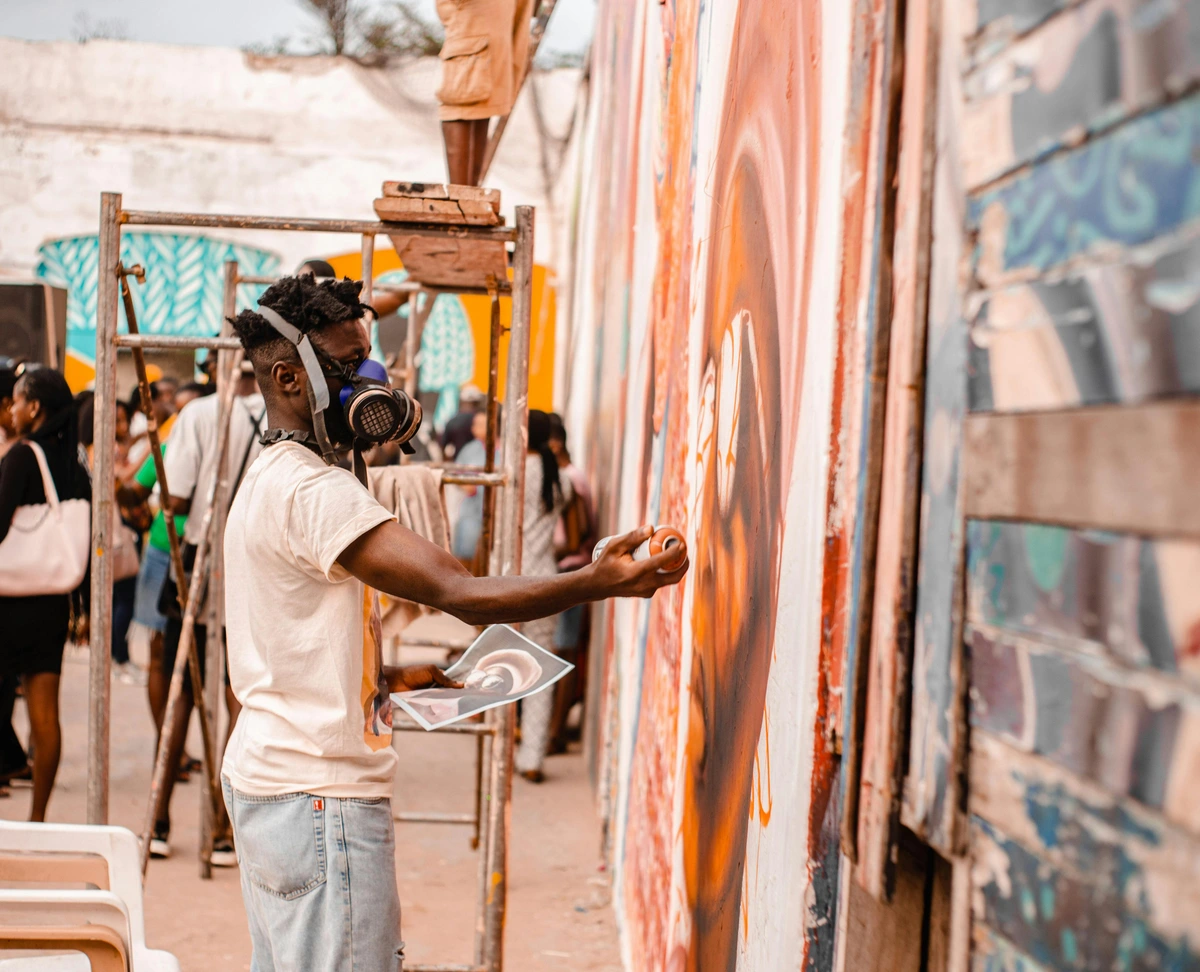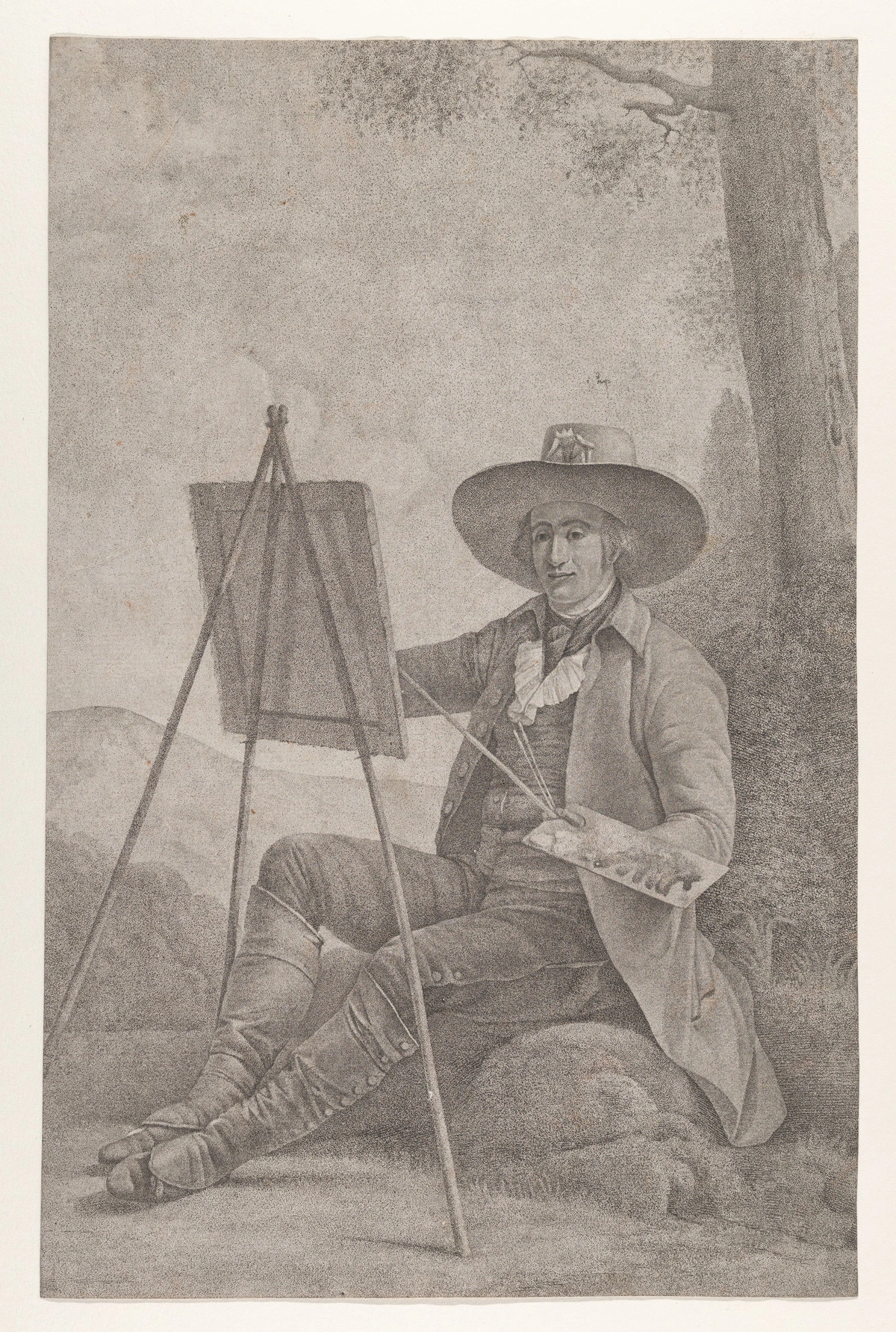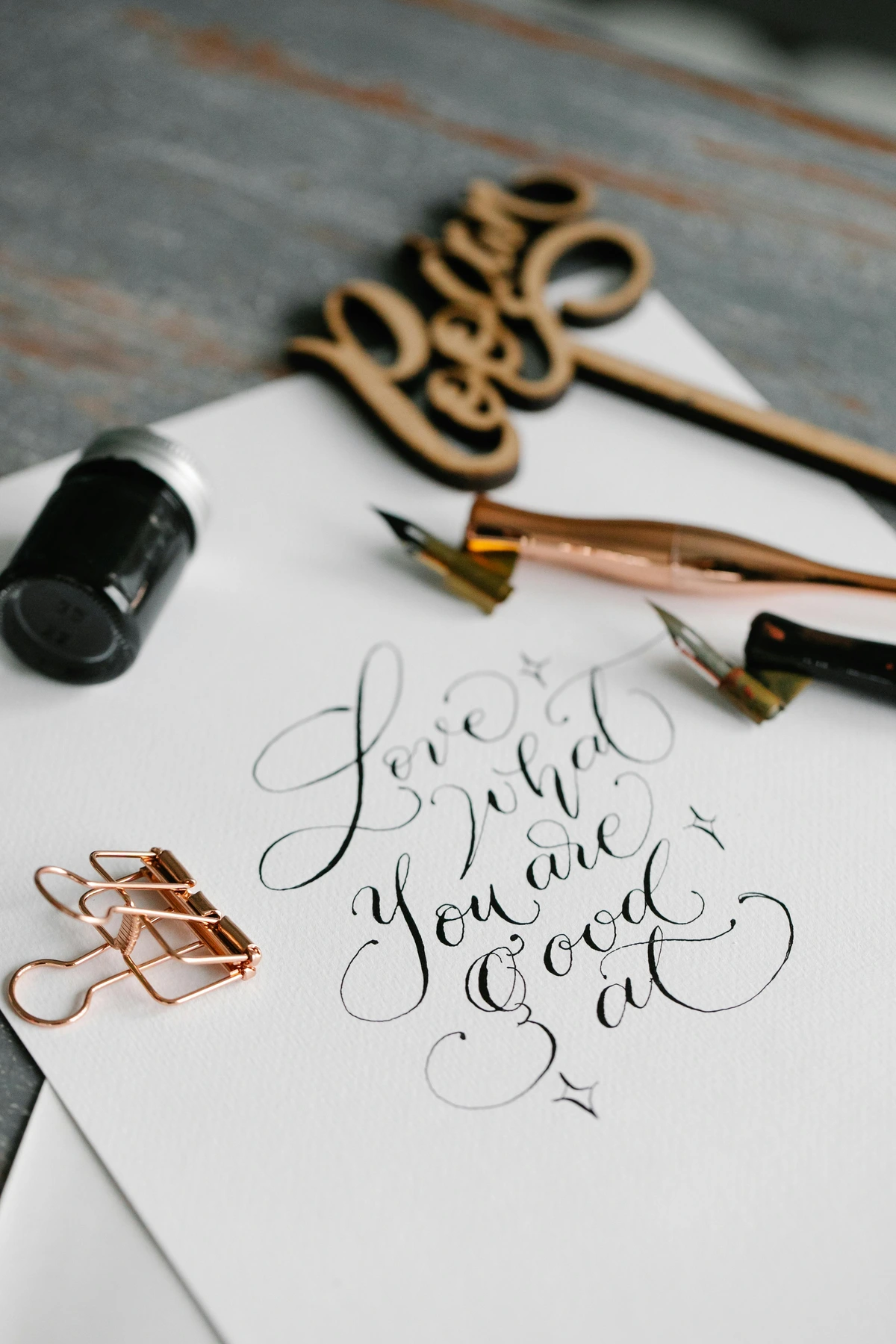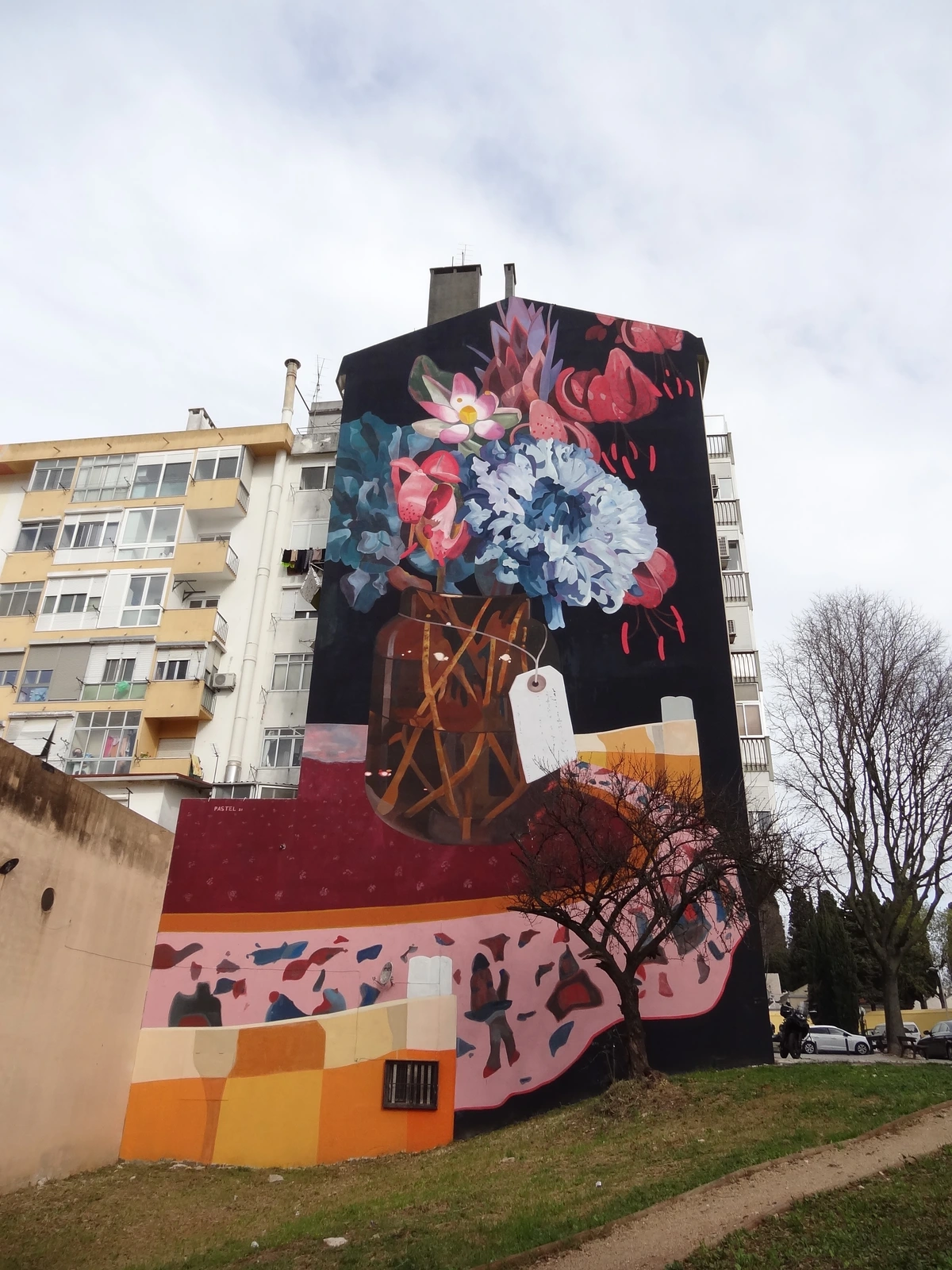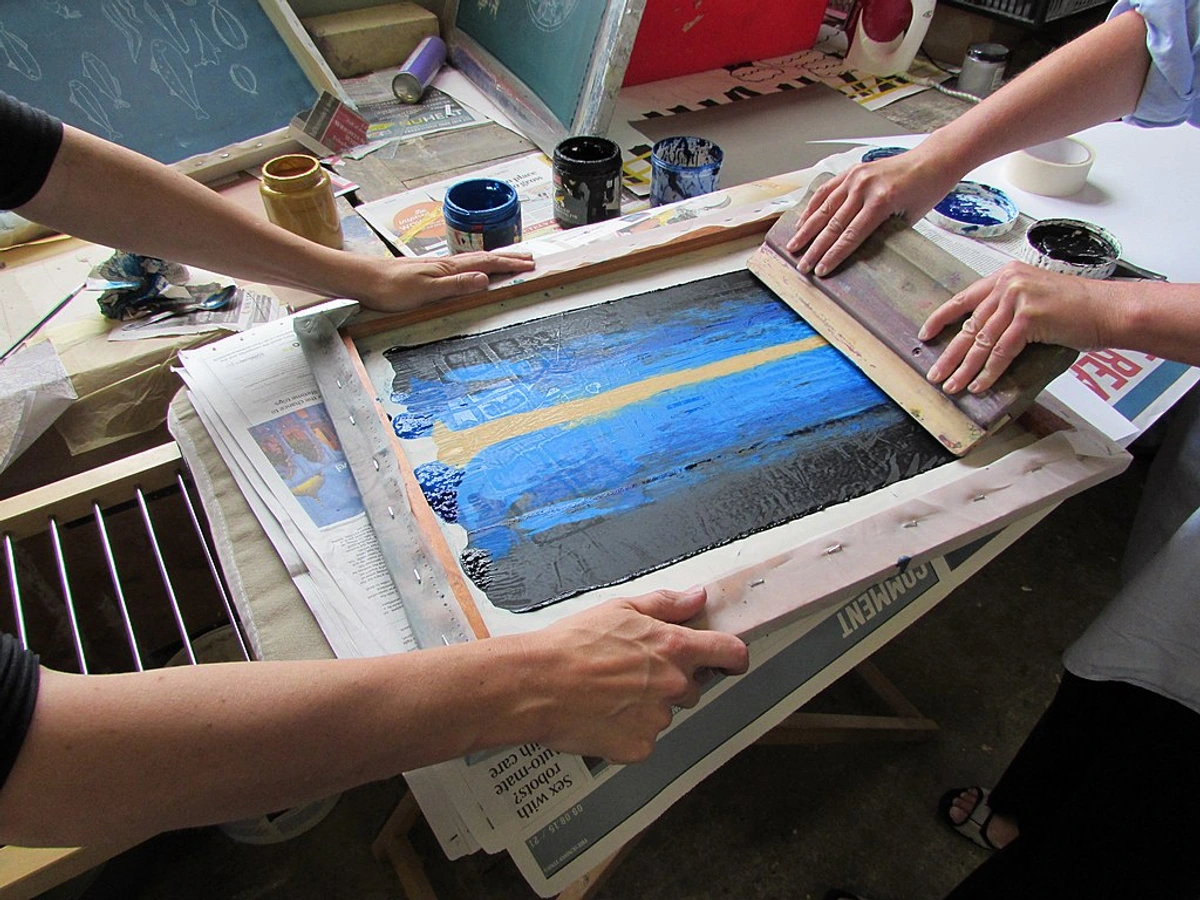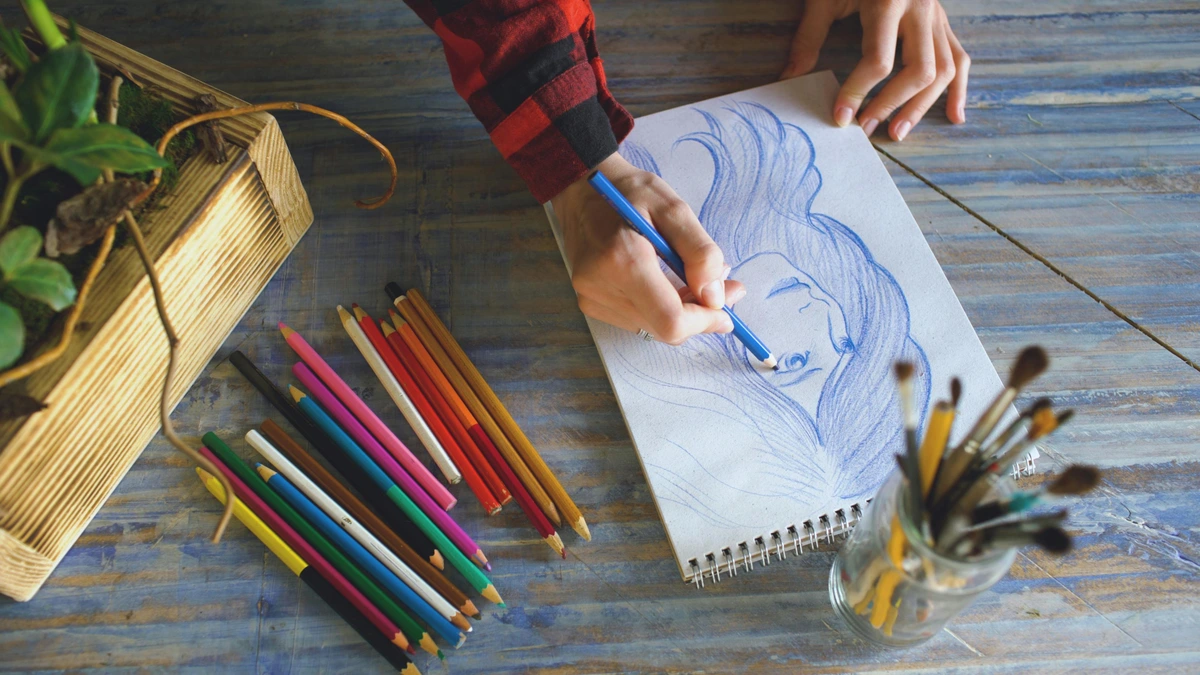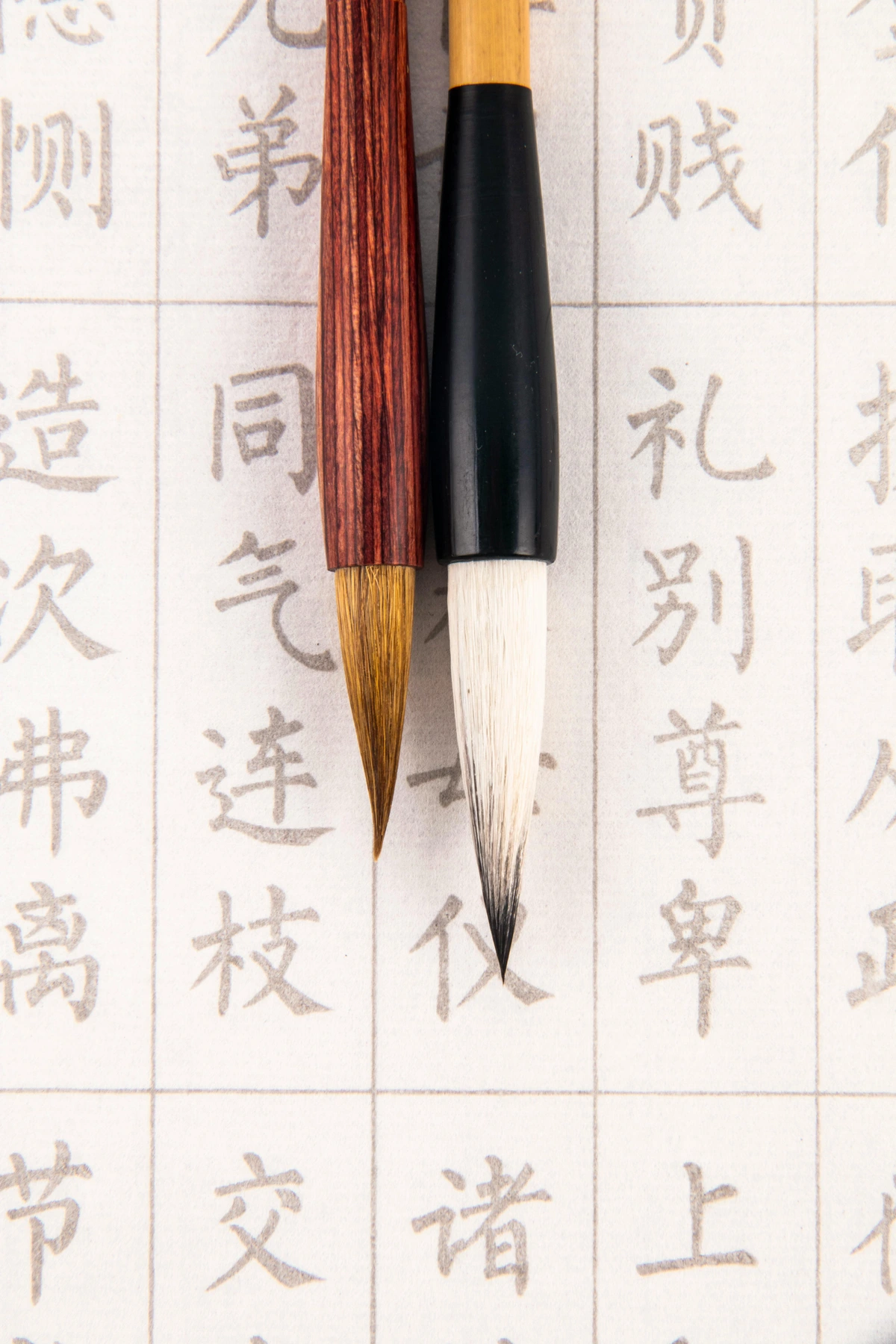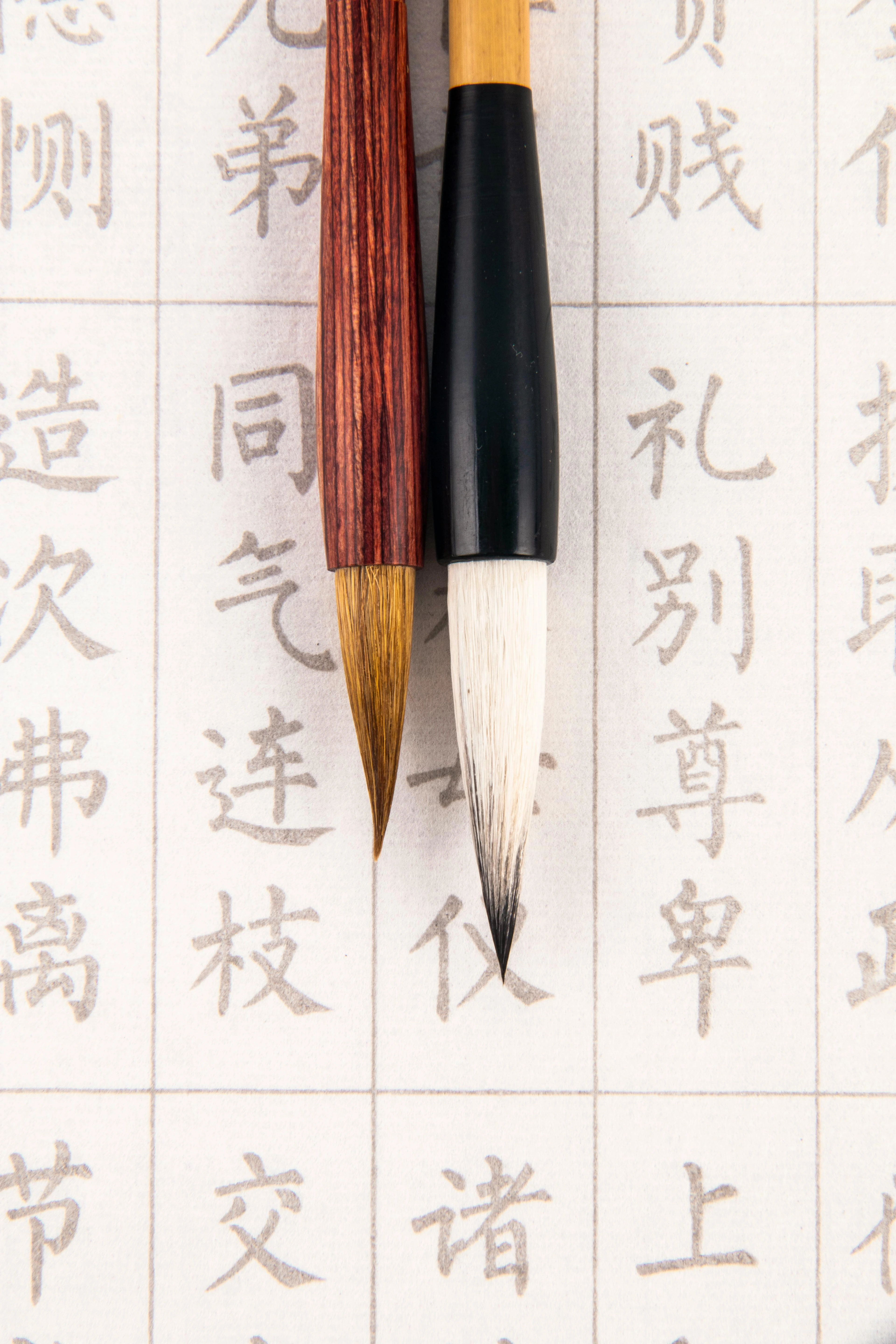
Best Studio Easels for Professional Artists: A Complete Review
As a professional artist, your easel is your silent partner. I've reviewed the top studio easels, sharing my personal insights on stability, features, and how to choose the perfect one for your artistic journey.
The Unshakeable Partner: Unveiling the Best Studio Easels for Professional Artists
Table of Contents
- Why a Great Studio Easel Isn't Just "Nice to Have" – It's Essential
- The Unseen Value: Protecting Your Art and Your Future
- Understanding the Core Types of Studio Easels
- H-Frame Easels: The Unshakeable Workhorses
- Lyre (A-Frame) Easels: Compact and Classic
- Tripod (Field) Easels: Versatile but with a Catch
- Convertible Easels: The Adaptable Chameleons
- Giant Radial Easels: For the Grand Vision * Specialized Easels: Beyond the Basics
- Tabletop Easels: Small Wonders for Specific Tasks
- The Historical Canvas: A Brief Evolution of Easels
- Key Features to Obsess Over When Choosing Your Easel
- Material Matters: Wood vs. Metal, and Beyond
- Adjustability & Ergonomics: Your Body Will Thank You
- Height Range & Canvas Capacity: Scaling Your Ambition
- Canvas Supports & Trays: Keeping Your Tools Handy
- Mobility: Wheels, Weight, and Studio Flow
- Storage & Portability: When Space is a Premium
- Assembly & Maintenance: Longevity Through Care
- Safety Features: Protecting Your Art and Yourself
- My Top Picks: Studio Easels I've Known and Loved (or Wished I Owned)
- The Robust, No-Nonsense H-Frame: Built for Generations
- The Smart, Space-Saving Lyre Easel: Elegance Meets Practicality
- The All-Rounder Convertible: The Medium-Hopping Chameleon
- The Ultra-Stable Display Easel: For Showing Off Your Masterpieces
- Beyond the Canvas: Integrating Easels into Different Artistic Disciplines
- Setting Up Your Studio for Success (Beyond the Easel)
- Optimizing Your Workspace: Flow, Lighting, and Digital Integration
- Essential Studio Accessories: The Supporting Cast
- FAQs about Studio Easels
- What about tabletop easels?
- How do I choose an easel for a specific medium?
- What is the maximum canvas weight an easel can hold?
- How much should a professional artist spend on an easel?
- Can I use a travel easel as my primary studio easel?
- How do I maintain my wooden easel?
- Is it better to paint standing or sitting at an easel?
- What are the best materials for an easel's construction?
- What accessories are essential for my easel?
- Are easels covered by a warranty?
- My Final Brushstroke: It's About Connection – And Longevity
I remember the first "proper" easel I ever bought. It was a sturdy, slightly wobbly H-frame, second-hand from an artist clearing out their studio. I hauled it home, feeling like I’d just acquired a magical artifact, a key to unlocking grander visions. And in a way, I had. It wasn't just a stand for my canvas; it was a silent partner, a witness to countless hours of creative struggle and triumph, absorbing the weight of my ambition and the sometimes literal weight of my thickly painted canvases. It was a commitment, a physical declaration that, yes, I was truly in this for the long haul. That subtle wobble, incidentally, taught me a lot about finding stability even when things aren't perfectly aligned – a pretty good metaphor for the artistic life, wouldn't you say? It also, in a way, taught me about the subtle art of choosing the right tools – not just for their immediate function, but for how they resonate with your creative spirit and support your journey, becoming an extension of your creative will. It's truly about cultivating a partnership with your equipment, ensuring it amplifies, rather than detracts from, your creative energy.
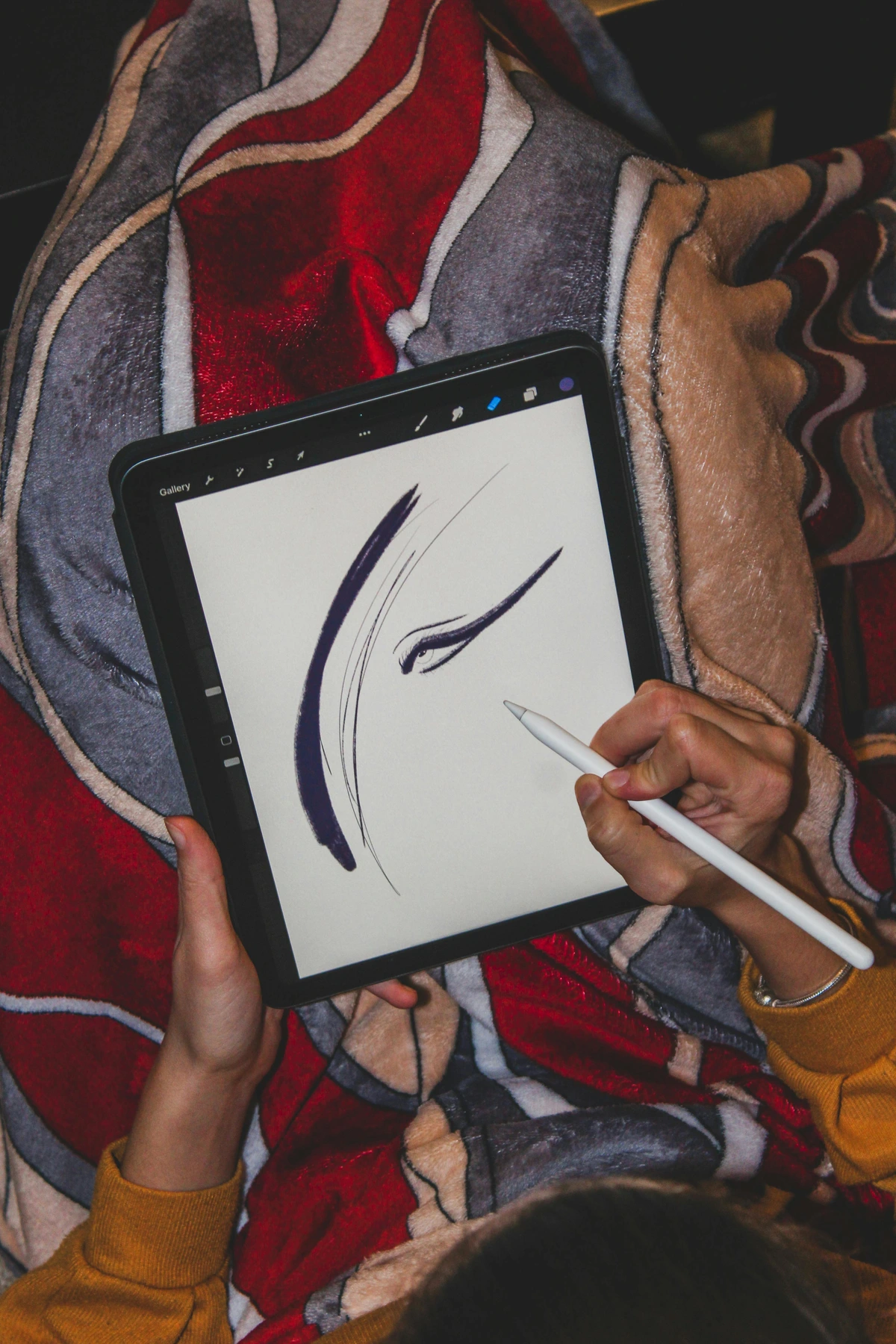
Choosing the right studio easel isn't like picking a tube of paint (though that's a whole other delightful rabbit hole, isn't it? Check out our guide to paint types if you're curious!). This isn't just about utility; it's about comfort, support, and creating a workspace that genuinely serves your artistic practice. As a professional artist, your easel is your anchor – the steadfast point from which your creative explorations launch. It dictates how you stand, how you approach the canvas, and ultimately, how freely you can express yourself without physical or mental distraction. Are you ready to invest in a piece of equipment that will be with you for years, if not decades? That's why I've delved deep into the world of studio easels, sharing my personal take on what truly matters, and frankly, what doesn't, when you're making this significant investment in your creative future. This isn't just a review; it's a comprehensive guide designed to equip you with all the knowledge you need to make the absolute best choice for your unique creative journey. We'll explore everything from the subtle nuances of material to the often-overlooked details of adjustability and storage. Let's make sure your next easel isn't just a stand, but a true partner in your artistic evolution. It's the silent support that quite literally holds your artistic dreams in place.
But beyond the immediate creative comfort, a good easel is also an investment in the longevity of your artwork. Imagine pouring weeks into a large, complex oil painting, with wet, delicate layers, only for a flimsy easel to wobble, causing a crack, or worse, a topple. Heartbreak, right? The stability of a professional easel isn't just about your comfort; it's a physical safeguard for your creative output, ensuring your masterpieces are held securely through every delicate brushstroke and every vigorous impasto layer.
The Unseen Value: Protecting Your Art and Your Future
Beyond the immediate physical and psychological benefits, a high-quality easel acts as an unacknowledged guardian of your artistic legacy. Consider the inherent value, both emotional and monetary, of a finished piece. A painting that took weeks or months to complete, especially with delicate layers or intricate details, is incredibly vulnerable during its creation. A sudden wobble, a minor bump, or an unexpected shift can lead to irreversible damage – a crack in a drying oil layer, a smudge on a pastel, or a tear in a canvas. This isn't just about preventing a minor inconvenience; it's about safeguarding countless hours of labor, creative energy, and often, significant material cost. A flimsy easel is a risk to your output, a silent threat to your masterpieces in the making. Investing in stability is, therefore, investing in the integrity and future value of your entire body of work. It’s a pragmatic decision that protects your creative assets.
Why a Great Studio Easel Isn't Just "Nice to Have" – It's Essential
Look, I've had my fair share of flimsy easels – the kind that shimmy when you lean into a bold brushstroke, or groan under the weight of a larger canvas. There’s nothing quite as frustrating as battling your equipment when you should be lost in the flow of creation. It's like trying to have a deep conversation with someone who keeps interrupting; the magic just disappears. A truly great studio easel offers unwavering stability, allowing you to apply pressure, blend vigorously, or just stand back and contemplate without fear of your artwork toppling over or, worse, subtly shifting mid-stroke. That kind of interruption can break the most fragile creative spell. Imagine the horror of a carefully constructed impasto layer crumbling because your easel decided to do a little jig. Nope. We're aiming for rock-solid confidence here, the kind that lets your hand move freely, almost instinctively, because you know your canvas isn't going anywhere.

Beyond stability, it’s profoundly about your body. Painting is physical work, make no mistake. I've seen too many artists (myself included, in younger, less wise days) hobble out of the studio with a crick in their neck or a dull ache in their lower back, all because their setup wasn't supporting them. Poor posture can lead to aches, pains, and even long-term injuries that can, quite frankly, cut short your painting life. A well-designed easel supports your canvas at an ergonomic height and angle, letting you work comfortably for extended periods. It sounds simple, almost too obvious, but trust me, your back, shoulders, and even your wrists will thank you. For me, it means I can lose myself in a painting for hours, focusing on the abstract dance of color and form rather than a nagging discomfort that pulls me out of the zone.
But it’s more than just physical comfort; it's also about psychological freedom. When your equipment is fighting you, or when you're constantly worried about your canvas wobbling or your back aching, your mind is pulled away from the true act of creation. A great easel removes these distractions, creating a mental space where you can fully immerse yourself, take risks, and truly explore your artistic vision without hindrance. It's about nurturing that deep, almost meditative state where the magic happens. Think of it as investing in your peace of mind, your creative flow, and ultimately, the quality of your output. This subtle but profound shift can unlock new levels of expression and confidence in your work. It's about having the mental bandwidth to chase that elusive idea, to experiment boldly, and to truly lose yourself in the dance of paint and possibility. I remember one particularly frustrating period where I was using a hand-me-down easel that would creak and shift every time I applied a bold brushstroke. It was like trying to have a serious conversation with a fidgety toddler! The constant distraction, that nagging fear of my canvas taking a dive, completely sabotaged my ability to get into the zone. When I finally upgraded, the difference was astounding – it wasn't just physical relief, but a profound mental liberation that allowed my creativity to truly soar. This psychological freedom, the ability to fully immerse without the nagging 'what ifs,' is arguably the most valuable return on investment a good easel provides. It clears the mental clutter, allowing for unadulterated creative flow and deeper exploration of your artistic vision.
Understanding the Core Types of Studio Easels
Before we dive into specific features, let's get a handle on the main types you'll encounter. Each has its own personality, its own strengths and weaknesses, much like different paint types. Picking the right one often comes down to your space, your preferred medium, and the scale of your work. It's like choosing a particular genre for your art – each one offers a unique set of possibilities and limitations.

Easel Type | Key Characteristics | Pros | Cons | Ideal For |
|---|---|---|---|---|
| H-Frame | Sturdy, rectangular base, adjustable mast | Exceptional stability, supports large canvases | Bulky, less portable | Professional artists, large-scale works, oil/acrylic painters, permanent studios |
| Lyre (A-Frame) | Three-legged design, often foldable, triangular | Space-saving, classic look, good for smaller works | Less stable than H-frame, limited canvas size support | Smaller studios, beginner to intermediate, light to medium-sized canvases |
| Tripod (Field) | Lightweight, three-legged, often telescopic | Highly portable, great for plein air painting | Least stable, not for heavy canvases, can be flimsy | Outdoor painting, workshops, small works, temporary setups |
| Convertible | Can shift from vertical to horizontal (table mode) | Versatile for various media (watercolor, mixed media) | Can be less stable in certain positions, complex adjustment | Mixed media artists, pastel, watercolor, artists needing horizontal surface |
| Giant Radial | Robust H-frame variant, extra-wide base, high mast | Ultimate stability for very large canvases | Very large footprint, expensive, not for small spaces | Monumental artworks, large-scale muralists, specific studio needs |
| Specialized | Designed for specific tasks (e.g., display, conservation, tabletop) | Highly optimized for niche uses, compact (tabletop) | Limited general versatility, not for heavy-duty work | Displaying, specific small-scale work, very tight spaces, workshops |
| Tabletop Easel | Compact, portable, designed for small surfaces on a desk or table | Ideal for small works, detail work, sketching, travel | Limited stability, no ergonomic height, not for large canvases | Students, hobbyists, small-scale work, detail-oriented tasks, temporary setups |
| Display Easel | Often elegant, minimalist designs, fixed or limited adjustment | Focuses entirely on the artwork, stable for presentation | Not for active painting, very limited adjustability | Showcasing finished artwork in studios, galleries, or homes, temporary displays |
H-Frame Easels: The Unshakeable Workhorses
If you're serious about your studio practice and regularly tackle substantial canvases, an H-frame easel is probably what you're picturing when you think "professional easel." These beasts are built like tanks – heavy, solid, and with a rectangular base that screams stability. Often crafted from dense, beautiful hardwoods like seasoned beech, oak, or even a robust elm, their sheer mass contributes to their legendary steadiness. The mast usually moves up and down on a ratchet or crank system, allowing you to position even the largest canvases with surprising ease. Many also feature a lower canvas support that can be adjusted independently, allowing you to work on different sections with ease. This thoughtful design ensures that whether you're working on a tiny detailed area or a broad, sweeping gesture, your canvas is precisely where you need it. My own large abstract pieces, those sprawling landscapes of emotion, often find their home on an H-frame. It's truly a no-fuss kind of support that lets me just paint with oils or heavy acrylics (perhaps even after applying gesso or experimenting with glazing techniques), knowing the canvas isn't going anywhere. It’s the kind of easel you can hand down through generations of artists, becoming a silent witness to countless creative journeys. These are the workhorses that empower monumental visions. I once had a client commission a piece so massive it barely fit through my studio doors; without my trusty H-frame, I honestly don't know how I would have managed the sheer physicality of that project. It's an investment that pays dividends in pure, unadulterated creative freedom. Some H-frames even come with robust castors, making it surprisingly easy to reposition a massive work for optimal lighting or a different perspective – a small luxury that makes a huge difference in day-to-day studio flow. The sophisticated crank or ratchet systems on higher-end H-frames are engineered for smooth, controlled movement, often incorporating counterbalance systems that make even colossal canvases feel weightless as you adjust their height. This isn't just a convenience; it's a necessity for maintaining a seamless workflow and preventing strain during long painting sessions. Furthermore, the solid construction often includes precision-machined components and interlocking joints that minimize any potential for flex or wobble, ensuring that every brushstroke lands exactly as intended, without any unwanted movement from your support. This level of engineering is what elevates a good easel to an indispensable studio partner.

Lyre (A-Frame) Easels: Compact and Classic
Ah, the Lyre easel, or A-frame as some call it. These are the elegant, often more affordable cousins to the H-frame, and a brilliant choice if you're navigating the realities of a smaller studio or looking for something that blends seamlessly into your home environment. With their three-legged, triangular design, they offer a surprising amount of stability for their relatively compact footprint. They fold down relatively compactly, which is a nice bonus for storage or moving them around your home – a true lifesaver when you need to reclaim some floor space after a session. While they might not handle a massive 6-foot canvas with the same unwavering confidence as a heavy H-frame, they're perfectly charming for smaller to medium-sized works, perhaps up to 40-50 inches, and bring a lovely, traditional aesthetic to the studio. If you're just starting to upgrade from a tabletop easel, or if you primarily work with light to medium canvases on watercolor paper, gouache, or pastels, this is a fantastic entry point. They offer significantly more stability than a tripod without the bulk of an H-frame, providing that crucial support as your artistic practice deepens, making it ideal for the artist who needs a serious easel but doesn't have endless square footage, a perfect fit for abstract art in small spaces. I’ve used a Lyre easel extensively for my portrait studies, where I need a stable, yet unobtrusive presence that allows me to get up close and personal with the details without the easel dominating the room. You'll often find models with an adjustable back leg that allows for a surprising range of tilt, from vertical to a gentle recline. This versatility in angle means you can work comfortably on various sections of your canvas, and even minimize glare, a small but significant detail often overlooked until you're battling reflections on a freshly painted surface. Many Lyre easels also boast a lower price point compared to their H-frame counterparts, making them an excellent choice for artists seeking a serious upgrade without a monumental financial commitment. They offer a significant leap in stability and adjustability over basic field easels, providing a solid foundation for developing artistic skills.

Tripod Easels: Versatile but with a Catch
Now, tripod easels are usually what I grab when I'm heading out for some plein air painting. They're incredibly lightweight and portable, folding down to a surprisingly small size, often fitting into a carry bag – ideal for the artist who finds inspiration in the shifting light of the outdoors. But here's the catch, and it's a significant one for studio artists: while their portability is a godsend for working outdoors, that lightness often translates to less stability in the controlled environment of a studio. They can be a bit wobbly, especially with larger canvases, thick impasto textures, or vigorous brushstrokes that require a lot of pressure. While they might seem like a budget-friendly option, a professional working indoors needs more unwavering support. For quick sketches, small, light canvases, displaying finished work, or even as a temporary setup for referencing a digital drawing tablet or small studies, they're perfectly fine. But I wouldn't recommend one as your primary studio workhorse if you're a professional tackling serious projects. Think of them as your mobile sketchpad, your nimble companion for adventures, not your main workstation for deep, focused studio practice where stability is paramount. I learned this the hard way trying to use a field easel for a large, expressive abstract piece indoors – it was a constant battle against the easel's inherent desire to move! The frustrating wobble, the constant fear of collapse, and the sheer mental drain of fighting your equipment completely overshadow any initial cost savings. For a studio, if space is truly at a premium, a compact Lyre easel will almost always outperform a tripod in terms of stability, offering a far more robust and distraction-free creative environment. The temporary nature and inherent instability of many tripod designs mean they are often best reserved for their specialized niche: quick outdoor sessions or temporary display, not as the backbone of a serious studio practice.

Convertible Easels: The Adaptable Chameleons
If your artistic practice, like mine, spans a few different mediums, from thick oils to delicate watercolors, a convertible easel might just be your new best friend. These clever contraptions can usually shift from a vertical upright position to a horizontal table-like surface. This is a game-changer for working with essential watercolor supplies, inks, pastels (which shed pigment downward), or mixed media where you need a flat surface to prevent drips, apply intricate details, or even work on large-scale drawings. Some models even allow for a slight forward tilt, which is perfect for pastel artists to let dust fall away and prevent unwanted smudging, or a backward tilt to reduce glare, making them incredibly versatile for managing light and medium. While they offer incredible flexibility, it's worth noting that some designs can be a bit less rigid than a dedicated H-frame when fully upright, so it's a trade-off you need to consider carefully. But for an artist who loves to experiment, to cross boundaries between mediums, and perhaps even integrates a digital tablet for reference work, they're absolutely invaluable. They adapt to your creative whims, rather than forcing your creativity to adapt to them. I find myself constantly shifting my convertible easel when I'm deep into a mixed-media piece, going from a vertical canvas for expressive acrylic marks to a flat surface for delicate paper collage and ink washes. It's a true studio workhorse for the uninhibited experimenter. Look for models with smooth, intuitive adjustment mechanisms and, critically, robust locking mechanisms – the last thing you want is to fight with your easel when inspiration strikes, or worse, have it unexpectedly shift mid-creation. The engineering behind a good convertible easel is a delicate dance between stability and flexibility, and the best ones achieve this balance through high-quality materials and thoughtful design. Some even offer storage drawers or integrated palettes for added convenience when shifting between different media, further enhancing their chameleon-like adaptability.

Giant Radial Easels: For the Grand Vision
Every now and then, an artist gets an idea so big, so monumental, that it demands an easel equally grand. Enter the giant radial easel. These are essentially super-sized H-frames, often with an even wider footprint and a mast that extends to dizzying heights, sometimes over ten feet tall. We're talking about supporting canvases that are taller than a person, allowing artists to work on monumental installations or large-scale murals. These are highly specialized tools, usually found in very large studios with high ceilings, and definitely an investment. If your ambition knows no bounds, if your canvases are measured in meters, not inches, and if your vision is truly grand, these could be on your wish list. For me, they represent pure, unadulterated artistic freedom on a grand scale, a silent testament to the boundless potential of human creativity. I often dream of a studio large enough to house one of these magnificent structures – imagine the sheer scale of abstract expressionism you could achieve! They often feature extra-robust crank systems and sophisticated counterweights to manage the immense weight of large canvases, making what seems impossible, genuinely achievable. These counterbalance systems are meticulously engineered, distributing the load so that adjusting a gargantuan canvas becomes a smooth, controlled, and surprisingly effortless task, even with a single hand. It’s the kind of precision engineering that elevates a tool to an art form in itself. Beyond their sheer size, these easels are often constructed with industrial-grade materials like heavy-gauge steel or exceptionally dense, aged hardwoods, ensuring they can endure the stresses of monumental work for decades. They are, in essence, the supercomputers of the easel world – specialized, powerful, and essential for the most demanding artistic projects.

The Historical Canvas: A Brief Evolution of Easels
Before we dive deeper into modern easel features, let's take a quick stroll through history. While the basic concept of propping up a surface to paint on is ancient, the easel as we know it has evolved alongside artistic practices and technological advancements. Early artists often worked directly on walls or used simple stands. The Egyptians, for example, leaned their papyrus or wood panels against walls or blocks.
It wasn't until the Renaissance that the easel truly began to take its familiar form. As artists moved from frescoes to canvas, and as the demand for portable, individual artworks grew, the need for a stable, adjustable support became paramount. Masters like Leonardo da Vinci and Michelangelo would have used rudimentary easels, likely robust wooden tripods or simple H-frames, allowing them to tackle the scale and detail of their masterpieces.
The 17th and 18th centuries saw more sophisticated designs emerge, particularly with the rise of oil painting and the desire for greater comfort and versatility in the artist's studio. Innovations like adjustable height mechanisms and the ability to tilt the canvas became increasingly common. The 19th century, with the advent of Impressionism and plein air painting, brought about the popularity of lightweight, portable field easels, allowing artists to capture the fleeting light of nature outdoors. This period also saw the standardization of easel types that still form the basis of what we use today.
Today, while the core designs remain, modern easels incorporate advanced materials, precision engineering, and ergonomic considerations, making them more adaptable and user-friendly than ever before. From simple display stands to colossal studio workhorses, the easel continues its silent, steadfast support of artistic endeavor across centuries. It’s a testament to a fundamental human need: to create, and to have a reliable partner in that creation.
Key Features to Obsess Over When Choosing Your Easel
Beyond the basic type, there are a handful of features that can make or break your easel experience. Don't skip these details; they're the subtle differences that elevate a good easel to a great one. These aren't just technical specifications; they're the silent assurances that your easel will not only perform its function but enhance your entire creative process, day in and day out. It's where the rubber meets the road, or perhaps more accurately, where the brush meets the canvas.

Feature | Why It Matters | My Personal Take |
|---|---|---|
| Feature | Why It Matters | My Personal Take |
| :------------------------- | :--------------------------------------------------------------------------------- | :---------------------------------------------------------------------------------------------------------------------------------------------------------------------------------------------------------------------------------------------------------------------------------------------------------------------------------------------- |
| Material (Wood vs. Metal) | Wood: Classic aesthetic, often heavier (more stable), absorbs vibrations, develops a rich patina over time. Metal: Lighter, more modern, easier to clean, great for outdoor/wet conditions, often more resistant to warping. | I'm a wood person through and through. There's something about the natural feel and the way it becomes part of the studio's patina – each paint splatter tells a story. That said, a good aluminum easel is incredibly practical for certain situations, especially if you're messy like me with acrylic mediums or doing outdoor work where weather is a factor. Consider treated or sealed wood for extra durability against spills and humidity, extending its lifespan. For artists in humid climates, or those prone to particularly messy acrylic mediums or solvent-heavy oils, a metal easel offers superior resistance to warping and easier cleanup. However, the tactile warmth and aesthetic appeal of a well-crafted wooden easel are often unparalleled for many artists, becoming a piece of functional sculpture in its own right. |
| Adjustability | Smooth, easy mechanisms for height and angle adjustment are crucial for comfort and versatility, allowing you to work standing or sitting. | If it fights you, you won't use it. A crank system or well-designed ratchet is a dream – imagine adjusting a large canvas with one hand! Don't underestimate the power of tilting your canvas forward (for pastels) or back (to reduce glare, or for watercolors) to catch the light just right or manage your medium. Counterbalance systems can make even heavy canvases feel weightless during adjustment, turning a chore into a fluid motion. Beyond these, a key consideration is the smoothness of the mechanism – does it glide effortlessly, or does it stick and judder? A jerky adjustment can disrupt your concentration and even compromise the integrity of delicate wet paint layers. Look for quality hardware, precision-cut gears, and durable locking pins or clutches that engage firmly without slipping, ensuring your canvas stays exactly where you set it. |
| Height Range & Canvas Capacity | Can it hold your smallest sketch and your largest canvas comfortably, allowing you to work standing or sitting? Does it support the weight of heavy canvases and materials (like thick impasto)? | I paint both standing and sitting, depending on the piece and my energy levels. Make sure it can accommodate your full range of work, from a tiny study to a monumental canvas, and don't forget to measure your studio ceiling height! Always check the maximum weight capacity – pushing an easel beyond its limits can be dangerous and costly, potentially damaging your art or yourself. Consider how far forward or back the canvas can tilt, too. And crucially, measure your studio ceiling height! I've seen artists fall in love with a monumental easel only to find it won't fully extend in their space, which is a heartbreaking logistical nightmare. The ideal easel supports your ambition without literally bumping its head on the ceiling. |
| Canvas Supports & Trays | Securely hold the canvas without damaging it, ideally with non-slip rubber or cork padding. Trays offer space for brushes, palettes, and tools, keeping essentials within reach. | My easel trays are often littered with tubes of paint, palette knives, and yes, even my coffee cup (don't tell anyone!). A deep, sturdy, and easily cleanable tray is a lifesaver, especially if you work with messy mediums or need quick access to a specific brush. Some offer side trays or even integrated water pot holders, truly elevating the convenience factor. Beyond convenience, the design of the canvas supports themselves is vital. Look for broad, flat supports that distribute weight evenly and ideally feature non-slip rubber or cork padding to protect the canvas frame from scratches or indentations. Adjustable upper and lower supports ensure that canvases of varying heights can be securely cradled, preventing any accidental slips or shifts during intense painting sessions. |
| Mobility (Wheels & Weight) | Essential for moving heavy easels or rearranging your studio layout, or even simply for cleaning. Lighter easels are more portable for workshops or plein air. | If your easel is substantial, high-quality, lockable wheels are non-negotiable. Being able to easily shift a large painting to catch the perfect studio lighting or gain a new perspective without breaking your back? Pure gold. For travel or field work, however, you'll prioritize lightweight design and rapid setup over wheels – it's all about matching the tool to the task. Even for stationary studio easels, the ability to pivot or rotate the canvas, often enabled by a rotating canvas holder, can be incredibly beneficial. This allows you to work on different orientations of your painting without repositioning the entire easel, offering fresh perspectives and reducing physical strain. |
| Foldability/Storage | Important for smaller studios, multi-purpose rooms, or if you need to occasionally reclaim floor space. | Even in a dedicated studio, sometimes you need to tuck things away or protect them from dust. A well-designed easel will fold down without too much fuss, often requiring no tools. Consider its folded dimensions – can it fit behind a door or in a closet, or be easily transported? For precious wooden easels, the ability to store them away from direct sunlight or harsh drafts can also contribute to their longevity, preventing warping or cracking over time. Think of it as putting your silent partner to bed after a long day of creation, protecting it until your next session. |
| Assembly & Maintenance | How easy is it to put together, often requiring minimal tools? What kind of care does it require for longevity, including cleaning and lubrication of moving parts? | Some easels are a breeze to assemble, others a nightmare – always check reviews or watch assembly videos online before you buy! And remember, a little love goes a long way in making your easel last a lifetime. Regular cleaning and occasional lubrication of metal parts will keep it operating smoothly, preventing frustrating squeaks or stiff mechanisms. When considering assembly, always check for clear, visual instructions and the need for specialized tools. Some easels are designed for intuitive, tool-free assembly, while others might require a dedicated afternoon and a full toolbox. The easier it is to set up, the faster you can get to the good stuff – painting! |
| Safety Features | Secure locking mechanisms, sturdy construction, and smooth edges prevent accidents. | Nobody wants a canvas crashing down or a pinched finger. Good design prioritizes safety, especially with heavy-duty equipment. Look for sturdy, intuitive locking mechanisms and ensure there are no obvious pinch points in the adjustment mechanisms. Beyond this, consider the overall footprint of the easel, especially if you have a busy studio. A stable base is crucial, but it shouldn't be so sprawling that it becomes a tripping hazard. Thoughtful design balances maximum stability with a sensible use of floor space, allowing you to move around your artwork freely and safely. |
| Balance & Counterweights | For larger easels, counterbalance systems can make adjusting heavy canvases effortless and safe. | On monumental easels, a well-engineered counterbalance system is a game-changer. It means you can raise or lower a massive canvas with minimal effort, reducing strain and increasing precision – a true luxury. This is about more than just convenience; it's a critical safety feature for managing significant weight. A well-balanced easel, even without an explicit counterbalance system, feels inherently stable. This is often achieved through a wide, heavy base and careful distribution of weight in its construction, ensuring that even with a large canvas loaded, the center of gravity remains low and secure. You shouldn't feel like you're playing Jenga with your artwork. |
Deeper Dive into Key Features
Let's unpack these a bit more, because these aren't just bullet points; they're the details that will define your daily artistic experience. Choosing wisely here means the difference between a constant battle with your equipment and a seamless, joyful immersion in your craft.

My Top Picks: Studio Easels I've Known and Loved (or Wished I Owned)
Alright, if I were to recommend some archetypes based on years of studio hopping and easel testing, here's where I'd steer you. Remember, these aren't specific brands (I'm not here to shill, just to share my experience), but rather categories of excellence. Think of these as the personality types of easels, each with their own unique charm and strengths, ready to seamlessly integrate into your creative life and workflow.
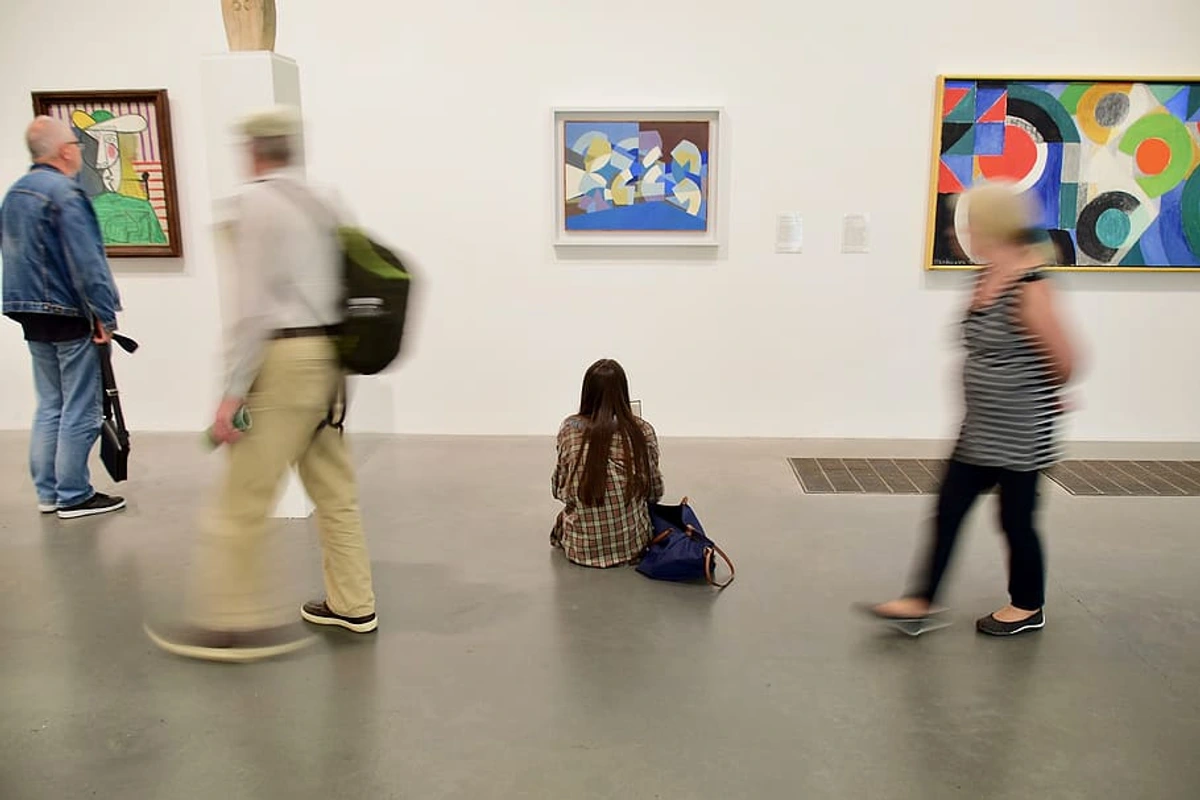
Alright, if I were to recommend some archetypes based on years of studio hopping and easel testing, here's where I'd steer you. Remember, these aren't specific brands (I'm not here to shill, just to share my experience), but rather categories of excellence.
1. The Robust, No-Nonsense H-Frame: Built for Generations
For the artist who craves unyielding stability and regularly tackles monumental canvases, I always point towards a solid, hardwood H-frame. Look for one made of quality, durable wood like seasoned beech, oak, or even a robust elm, with a wide, heavy base that feels like it's rooted to the earth. A smooth crank mechanism for height adjustment is a must, allowing you to position even the largest canvases with surprising ease, and some even incorporate counterbalance systems for truly effortless movement. This is the easel that lets you lean into the canvas, to scrape and build texture with a palette knife or a heavy brush, without a second thought of wobble or collapse. It's the kind of easel that feels less like a piece of equipment and more like an extension of your creative will, allowing for uninhibited, physical expression. When I'm working on a piece where I'm literally pushing and pulling paint, building up thick impasto textures, or making bold, sweeping gestures with a palette knife, the H-frame is my only true confidante. It's the kind of easel that, with proper care, could easily become a family heirloom, witnessing generations of artistic endeavors, a silent giant supporting dreams. My most cherished H-frame, acquired decades ago, has seen me through countless abstract expressionism experiments and delicate glazing techniques, always holding steady. It's a testament to enduring craftsmanship, and a true partner in my finding my voice:-the-evolution-of-my-abstract-artistic-style.
2. The Smart, Space-Saving Lyre Easel: Elegance Meets Practicality
If your studio is more of a cozy nook than a sprawling warehouse, don't despair! There are some truly fantastic Lyre easels that offer surprising stability for their size. Seek out models with good quality hardware – sturdy metal clamps, not flimsy plastic, and solid wood construction. A good Lyre will handle medium-sized canvases beautifully, perhaps up to 40-50 inches, and still allow you to tuck it away when guests arrive (or when you just need to stretch your legs without tripping over everything). It's the perfect balance of functionality, classic aesthetic, and discreet storage, making it ideal for the artist who needs a serious easel but doesn't have endless square footage. I’ve found that for smaller abstract studies, delicate drawing work, or even intricate portraiture, a well-made Lyre offers just the right amount of support without overwhelming my creative space. It's unobtrusive yet utterly reliable for focused, less physically demanding tasks. Many Lyre easels also feature elegant, often carved details, making them a beautiful addition to any studio, blending seamlessly with both traditional and modern decor. For an artist focused on portraiture or still life, where subtle adjustments and close observation are key, the Lyre easel offers a perfect balance of form and function.
3. The All-Rounder Convertible: The Medium-Hopping Chameleon
For the artist who dances between oil, acrylic, pastel, and perhaps even some drawing or large-scale collage, a high-quality convertible easel is a godsend. My ideal convertible would have a sturdy H-frame construction that can seamlessly transition to flat, offering not just a vertical canvas support but also a stable horizontal tabletop. This means I can splash around with watercolors or ink, let pastels shed their dust downwards with a forward tilt, then smoothly transition to an upright position for a quick oil sketch, all on the same reliable piece of equipment. It's the ultimate multitasker for the artist whose creativity knows no bounds and whose studio might need to adapt to different media on a daily basis, even accommodating a digital drawing tablet for reference work. It's the easel that says, "Yes, you can do it all," without a hint of judgment as you switch from delicate washes to bold oil stick gestures or intricate mixed media collages. Look for models with a wide range of adjustability in both height and angle, and robust locking mechanisms to ensure rock-solid stability in every configuration, preventing any unexpected shifts that could derail your work.

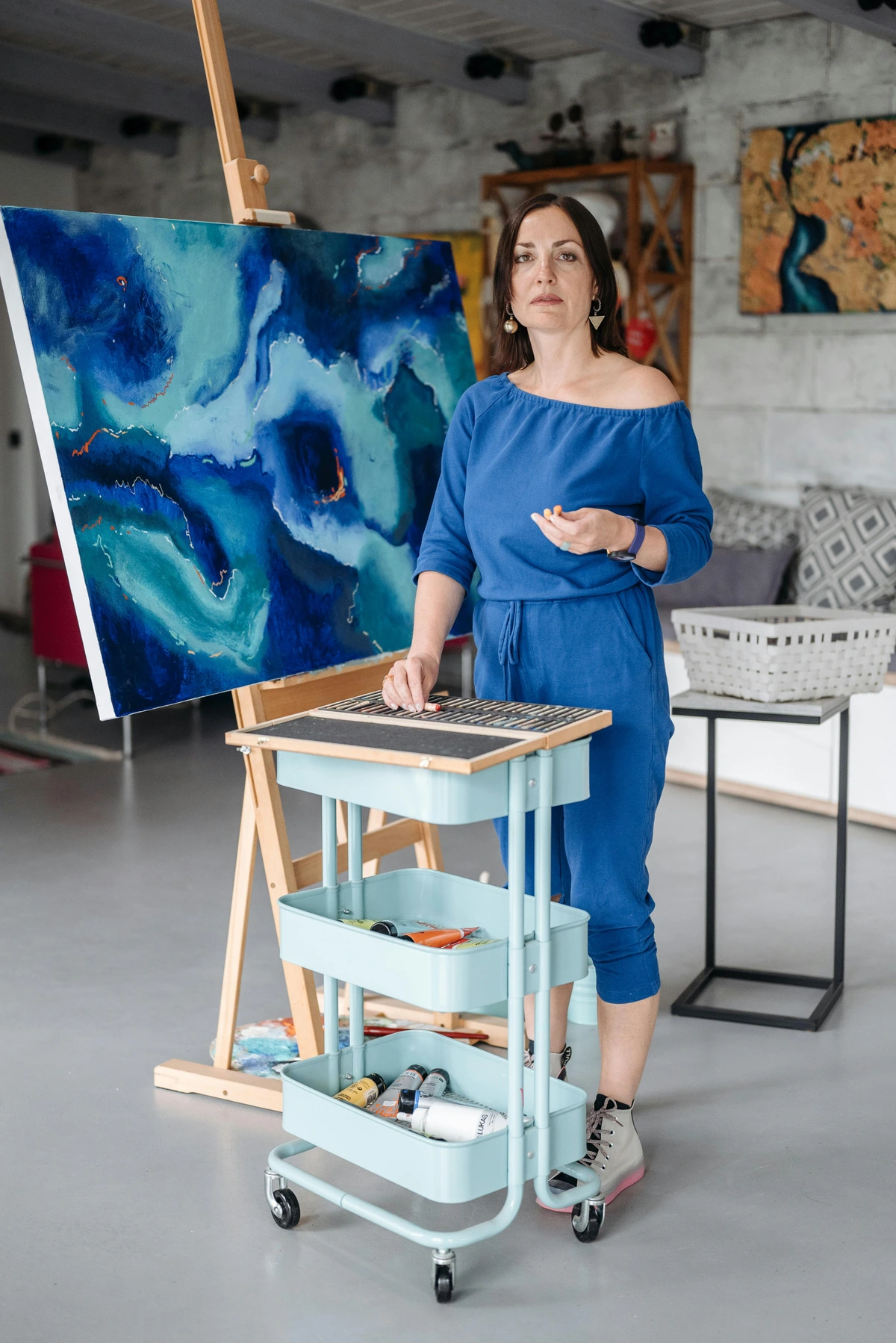
credit, licence
4. The Ultra-Stable Display Easel: For Showing Off Your Masterpieces
While not for active painting, a dedicated, sturdy display easel is invaluable for showcasing finished work in your studio, gallery, or even your home. These are often elegant, minimalist designs that put the focus entirely on the artwork. Look for robust construction (often metal for sleekness, or finely finished wood for classic appeal) and a wide, stable base to prevent accidental tipping. It’s the final flourish, the presentation stage for your creative journey, allowing your masterpieces to truly shine. I often use one to live with a finished piece for a few days, seeing it in different lights, from various angles, and at different times of day before I decide it's truly complete. This final viewing stage is crucial for self-critique, allowing me to ensure the piece holds up in diverse environments, much like how a curator would assess a work before hanging it in a gallery. It allows the artist to step back, reflect, and engage in the critical final dialogue with their creation before it makes its way to a client or an art exhibition.
Beyond the Canvas: Integrating Easels into Different Artistic Disciplines
While we often associate easels primarily with painting, their versatility extends to numerous other artistic disciplines. A good easel, or a specialized variant, can be an invaluable tool for a wider range of creative pursuits, enhancing comfort and precision.
Easels for Drawing and Sketching
For artists focused on drawing with graphite, charcoal, or pastels, a sturdy easel can elevate their practice (quite literally!). Working vertically or at a comfortable incline prevents the distortion that can occur when drawing on a flat surface, allowing for better perspective and reducing strain on the neck and back. Convertible easels, which can tilt forward, are particularly excellent for pastel and charcoal artists, allowing excess dust to fall away from the artwork. Even a simple, adjustable drawing board on a stand can make a world of difference for large-scale drawings or anatomical studies.
Easels for Calligraphy and Lettering
While often done at a desk, some calligraphers and letter artists find benefit in working on a slightly inclined surface, similar to drafters. A small tabletop easel or a dedicated drawing board can provide the perfect angle for maintaining consistent strokes and viewing the overall composition. It reduces wrist fatigue and allows for a more fluid, controlled motion, especially for intricate scripts or large-format pieces. The precision required for essential calligraphy supplies benefits greatly from a stable, angled surface.
Easels for Sculpture and Model Making
Though not a traditional easel, a sculptor's stand or modeling stand serves a very similar purpose: holding a workpiece at an optimal, adjustable height and angle. These can range from simple turntables for small clay models to robust, height-adjustable plinths for larger, heavier sculptures. The ability to rotate and elevate the piece allows the sculptor to work from all angles without constantly moving themselves or the artwork, promoting a more fluid and ergonomic working process. It's the easel's three-dimensional cousin, supporting visions in physical space.
Easels for Display and Presentation
Beyond the active creation process, easels play a crucial role in showcasing finished artwork. Elegant display easels are used in galleries, studios, and homes to present paintings, framed prints, or even digital art on a screen. These are designed for aesthetic appeal and stable presentation, often with minimalist designs that don't detract from the artwork itself. They allow a piece to breathe, to be viewed from different distances, and to truly stand out, making them indispensable for artists and collectors alike. Think of them as the stage where your masterpieces take their final bow.

Setting Up Your Studio for Success (Beyond the Easel)
Your easel is paramount, yes, but it's part of a larger ecosystem – your studio. A well-organized, thoughtfully designed studio is itself a canvas for creativity, where every element, from lighting to storage, plays a supporting role in your artistic journey.
Optimizing Your Workspace: Flow, Lighting, and Digital Integration
- Studio Flow: Do you have enough room to step back and view your work from a distance, allowing you to truly assess your composition and progress, identify areas for improvement, and maintain perspective? Can you move freely between your easel, your palette, your sink, and your other tools without tripping over something or constantly reorganizing? Optimizing your studio flow, from the moment you conceive an idea to the final brushstroke, is just as crucial as the tools within it. Consider how you transition between different stages of your process – from mixing paint to applying it, to cleaning up, to stepping back for critical review. An efficient flow minimizes mental friction and keeps you immersed in the creative act, rather than battling your environment. This might mean having your frequently used paint types and brushes within an arm's reach of your easel, or a clear path to a drying rack. A thoughtful studio layout anticipates your movements, minimizing steps and interruptions. It’s about creating an intuitive environment where the physical space doesn't just accommodate your work, but actively supports and streamlines your creative process, allowing you to stay immersed in your artwork without unnecessary mental or physical breaks.
- Lighting is King: Is your studio lighting optimized to reveal true colors, allowing you to accurately perceive your palette and avoid unwelcome surprises when your painting moves to a different environment? I've seen too many brilliant pieces fall flat because they were painted under harsh, inaccurate light. Aim for consistent, diffused natural light (north-facing windows are ideal) supplemented by full-spectrum, color-balanced artificial lights with a high CRI (Color Rendering Index). This ensures that the colors you see and mix under your studio conditions will translate accurately to other viewing environments, preventing jarring shifts in hue or value. It's like having an honest critic constantly whispering in your ear, but in a good way. The right studio lighting is not just about brightness; it's about color temperature and accuracy. Poor lighting can subtly alter your perception of hues, leading to muddy mixes or paintings that look drastically different under gallery lights. A high CRI (90+) is crucial for distinguishing subtle nuances in color and value, giving you confidence that your artistic intentions are accurately translated from palette to canvas.
- Digital Integration: Do you often work from digital references, conduct research, use digital sketching tools for preliminary concepts, or even display digital art as part of a mixed-media piece? Many modern artists find a dedicated spot for a drawing tablet or a second monitor invaluable for quick studies, referencing source material, experimenting with compositions, or even projecting images onto a canvas for transfer, all right within their painting setup. It's about bridging the physical and digital creative worlds seamlessly, enhancing your workflow without disrupting your tactile process, and allowing for dynamic, iterative experimentation. For many, this means a dedicated stand or arm for a tablet or monitor, positioned at eye level, ensuring quick glances don't break concentration. Integrating digital tools effectively can drastically speed up preliminary sketching, compositional planning, or even serve as an endless source of visual inspiration without cluttering your physical workspace with piles of reference photos or books.
Essential Studio Accessories: The Supporting Cast
Beyond the easel, a few key accessories can make a world of difference:
- Storage and Organization: Proper organization, from where you keep your brushes and paint types to how you store finished paintings and even watercolor paper, all contributes to a fluid creative process. Consider dedicated zones for different activities – a messy painting area where drips and splatters are welcome, a clean drawing table for delicate work, a space for framing, stretching canvas, or preparing materials, and perhaps even a dedicated drying area. **Rolling carts, shelving units, flat-file storage for works on paper, and modular drawer systems can transform a chaotic space into an efficient, inspiring one, where everything has its place, and you spend less time searching and more time creating. Consider also vertical storage solutions for canvases, which maximize space and protect finished or in-progress works from dust and damage. The goal is to minimize visual clutter, which can be a significant mental drain, allowing your creative focus to remain on the artwork itself.
- Comfortable Seating: Even if you mostly stand, a good, adjustable stool or chair for breaks or detailed work is crucial. Your body will thank you during those marathon sessions, preventing fatigue and promoting longevity. Look for something ergonomic that supports your posture, preferably with adjustable height and back support, allowing you to seamlessly transition between standing and sitting without compromising comfort. A good studio stool might also feature wheels for easy movement around your workspace and a footrest to further reduce leg fatigue during extended seated sessions. Investing in a quality chair or stool is an investment in your physical well-being and your ability to sustain long, productive hours in the studio.
- Ventilation: Especially if working with oils, solvents, aerosols, fixatives, or certain mediums that emit fumes, good cross-ventilation or even a dedicated air purifier/extractor system is paramount for your health. This isn't just about smell; it's about safeguarding your respiratory health and long-term well-being, creating a studio environment that supports rather than detracts from your artistic practice. Invest in your health – it's the foundation of your creative output. Beyond simple airflow, consider a ventilation hood or a portable fume extractor if you frequently work with highly toxic materials or in a poorly ventilated space. For studios located in basements or areas prone to dampness, a dehumidifier is also crucial to protect your materials (especially paper and wooden panels) and prevent mold growth, which can destroy artworks.
- Reference Materials: A dedicated space for art books, sketchbooks, tear sheets, or a mood board can keep inspiration flowing and help you explore new ideas. I also find a well-organized digital library of reference photos – categorized and easily searchable – invaluable for quick access to visual information without cluttering my physical space. This fusion of physical and digital inspiration ensures you're never short of ideas. A well-curated collection of art books, whether on the definitive guide to the history of abstract art: key movements, artists, and evolution or the psychology of color in abstract art, can offer deep dives into technique and theory. Equally important are personal sketchbooks and journals, which serve as a repository of nascent ideas, color studies, and observations – the raw material of your unique artistic language.
- Cleaning Station: A dedicated area for cleaning brushes and palettes is essential for maintaining your tools and preserving their longevity. This could involve a utility sink with a trap, a multi-bucket system for water or solvent separation, or a sealed container for proper solvent and paint waste disposal. Keeping your cleaning process efficient and contained prevents mess from spreading and minimizes exposure to harmful chemicals, making cleanup less of a chore and more a seamless part of your routine. Consider a dedicated solvent retrieval system for oil painters, which allows you to separate paint sludge from reusable solvent, reducing waste and environmental impact. For water-based mediums, a simple multi-bucket system for rinsing brushes from darkest to lightest colors can dramatically improve brush longevity and prevent cross-contamination of your paints.
- Fire Safety: For studios working with flammable materials like oils, solvents, or aerosols, a readily accessible small fire extinguisher (rated for chemical fires) is a wise, if hopefully never used, investment. Better safe than sorry when dealing with combustible art supplies. It's a small precaution that can protect your life, your studio, and your invaluable artworks. Additionally, ensuring clear pathways and keeping flammable materials stored in appropriate, sealed containers away from heat sources are fundamental fire safety practices that every artist should adhere to. A safe studio is a productive studio.
- Reflection Corner: And don't forget a comfortable spot for reflection – a quiet corner where you can simply sit and contemplate your work without distraction, allowing your subconscious to offer fresh insights, identify overlooked details, or spark new directions. This mental space is just as important as the physical space for allowing ideas to gestate and connections to form, leading to deeper artistic breakthroughs. Sometimes the best way to move forward is to simply sit still and observe. This is where you allow your intuition to speak, where you can identify what the painting truly needs next, rather than just what you think it needs. It's a space for internal dialogue, a place to reconnect with the why I paint abstract: my personal philosophy and artistic vision that drives your entire practice.
Remember, a studio should be a sanctuary, a place where ideas can take flight, free from unnecessary friction and where your creative flow can thrive. And if you're looking for that perfect piece to fill your creative space, or even to inspire your next masterpiece, don't forget to check out what's available to buy!
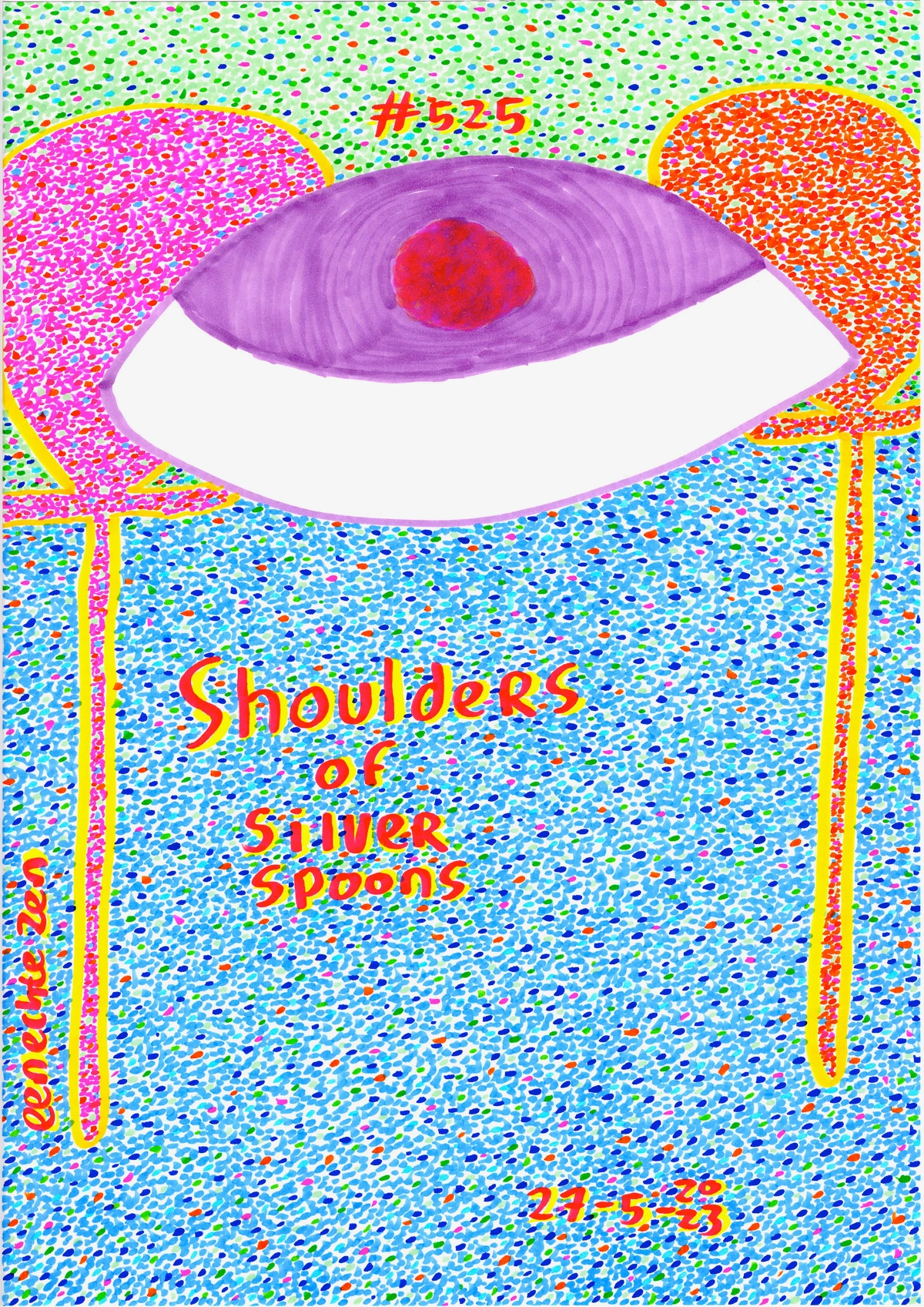
FAQs about Studio Easels
Alright, let's tackle some of the burning questions that often crop up when artists are trying to find their perfect easel. These are the queries I hear most often, and frankly, the ones I've pondered myself!
What about tabletop easels?
Tabletop easels are indeed fantastic for very small spaces, light work, or as a secondary easel for detailing intricate areas. They are incredibly portable, often folding flat, making them ideal for artists on the go or those who enjoy working in various spots around their home. However, it's essential to understand their limitations for professional studio work. They typically lack the stability, extensive height adjustability, and ergonomic support of a dedicated floor-standing studio easel. While good for quick sketches, small canvases, or working in a notebook, they generally won't provide the robust foundation needed for serious, extended painting sessions with larger works or vigorous techniques like applying thick impasto. Think of them as a useful, specialized tool in your kit, perfect for specific tasks, but rarely suitable as a primary workstation for a professional artist. For anything that requires significant pressure, a broad range of motion, or ergonomic support over hours, you'll quickly feel their constraints. The constant need to hunch over or adjust your body to accommodate the easel's limitations can lead to significant discomfort and even long-term physical issues. They're a bit like a pocketknife – incredibly useful in a pinch, but you wouldn't use it to carve a massive sculpture or perform complex surgery. While some tabletop easels offer a small degree of tilt, they inherently lack the broad height and angle adjustments that are paramount for ergonomic working during prolonged sessions. This often leads to hunching, neck strain, and shoulder discomfort, pulling your focus away from the creative act and onto your aching body. For any serious painting beyond quick studies, a floor-standing easel is a non-negotiable investment in your health and the quality of your work.
How do I choose an easel for a specific medium?
This is a fantastic question, and arguably one of the most critical considerations! Your medium heavily influences the ideal easel choice, as each has unique physical demands.
- Oils and Acrylics: These mediums often involve heavy canvases, vigorous brushwork, the application of thick impasto textures, or even the immediacy of alla prima painting. You'll want maximum stability and a setup that can be perfectly vertical or slightly tilted. A robust H-frame or a heavy-duty, well-constructed A-frame (Lyre) easel is excellent. Look for strong canvas supports that can bear significant weight and resist vibration. You'll be leaning into the work, sometimes quite literally, and you need an easel that stands its ground, especially when engaging in energetic techniques like alla prima painting where speed and confidence are key. The solidity of your easel directly translates to the freedom and boldness of your strokes. For artists working with heavy impasto or large-scale canvases, features like locking wheels are invaluable for repositioning the work for optimal lighting or perspective. You need an easel that feels like a bedrock, an unwavering presence that lets you attack the canvas with full conviction without fear of it shifting or collapsing. Think H-frame, or a very robust A-frame.
- Watercolors and Inks: These fluid mediums demand a horizontal or near-horizontal surface to control drips, allow washes to settle evenly, and prevent pigments from running downwards uncontrollably. A convertible easel that can lay completely flat or offer a very gentle incline is invaluable. You might also consider a dedicated drawing table with an adjustable tilt for larger watercolor paper. The goal here is to master the flow, not fight gravity. Using absorbent paper like watercolor paper is also key. For watercolor artists, the ability to adjust the tilt to control the flow of water and pigment is a nuanced but critical feature. A convertible easel that can offer a very gentle, almost imperceptible incline allows for precise manipulation of washes and avoids unwanted puddling or hard edges. Some dedicated watercolor easels even incorporate built-in water trays or brush rests for added convenience.
- Pastels and Charcoal: Dry mediums like pastels and charcoal produce dust. Artists often prefer a slight forward tilt on their easel to allow this dust to fall away from the working surface and prevent it from collecting on the artwork. Again, a convertible easel with good tilting capabilities is ideal here, or even a specialized pastel easel designed for this feature. This keeps your work cleaner and prevents unwanted smudging, preserving the vibrancy of your colors. The forward tilt is a simple yet revolutionary feature for dry media artists, minimizing the accumulation of pigment dust on the lower edge of the artwork. For those using soft pastels, a tray at the base of the easel to catch falling dust is also incredibly useful, keeping your studio cleaner and making it easier to reclaim pigments if desired.
- Drawing and Sketching: For most drawing, a simple sketching easel or a versatile convertible works well, as long as it's comfortable and holds your surface securely. The key here is ergonomic comfort and good visibility. If you're working with large-scale drawings or architectural plans, a large drafting table or a convertible easel used in its horizontal mode might be best. Even for simple pencil sketches with your best drawing pencils, proper support can prevent fatigue during long sessions, ensuring your hand remains steady and your focus sharp. For artists integrating digital work, a stand that can securely hold a drawing tablet at an ergonomic angle is a game-changer, allowing for seamless transition between traditional and digital sketching, or using digital references directly in your workflow.
- Mixed Media: If you're like me and your practice involves blending different materials (say, collage with acrylics or oil sticks on textured paper), a highly adaptable convertible easel is generally your best bet. Its ability to shift between vertical and horizontal positions provides the flexibility needed to accommodate various techniques without constantly changing setups. It's the ultimate chameleon, adapting to your every creative whim. For the artist whose creative flow leads them through diverse materials and techniques, a high-quality convertible easel is arguably the single most important investment after your core art supplies. It eliminates the need for multiple specialized easels, saving space and money, while providing maximum functional flexibility. The key is to find one with robust, easy-to-operate mechanisms that inspire confidence, not frustration, when transitioning between configurations.
Always consider how your medium behaves and what physical support, stability, and positioning it requires for optimal control and creative freedom. Your easel should be an enabler, not a limitation.
What is the maximum canvas weight an easel can hold?
This varies significantly by easel type, construction materials, and overall design. Most reputable manufacturers will explicitly list a maximum canvas weight and height specification, and it's absolutely crucial to check these, especially if you work on large or heavily textured pieces.
- H-frame easels, particularly those crafted from solid hardwood with wide, reinforced bases, are the champions here. They can typically hold very heavy canvases, sometimes exceeding 100-150 lbs (45-68 kg) or even more for monumental studio models. These are built for serious structural integrity, designed to withstand the most vigorous of artistic attacks! Think of them as the immovable object in your studio.
- Lyre (A-frame) easels will have a lower capacity, usually in the 20-50 lb (9-23 kg) range. While sturdy for most medium-sized works, they are not designed for the extreme weights an H-frame can handle. It’s a bit like asking a sedan to do the job of a heavy-duty truck.
- Lightweight tripod easels are often limited to 10-20 lbs (4.5-9 kg), making them unsuitable for anything beyond small, light canvases or sketch boards. Exceeding this limit can compromise stability, leading to wobbling or, worse, collapse. This is a safety hazard, plain and simple, and should be avoided at all costs.
- Convertible easels vary widely. Their capacity often depends on the stability of their locking mechanisms when in different positions. A good quality convertible will still offer significant support, perhaps in the 50-80 lb (23-36 kg) range, but always check. The more complex the mechanism, the more important it is to ensure its robustness and that all parts are securely locked.
Remember, the weight rating isn't just about the canvas itself, but also the cumulative weight of layers of paint, gesso, and any other materials you might add. Always err on the side of caution and choose an easel that comfortably exceeds the weight of your heaviest potential artwork. It’s an investment in both your art's safety and your peace of mind. A falling canvas isn't just a creative setback; it can be a costly and dangerous one, potentially causing injury to you or damage to your studio, beyond the artwork itself. To truly grasp the implications, imagine the worst-case scenario: a large, wet oil painting crashing to the floor, not only destroying the artwork but also splattering paint across your studio, potentially damaging equipment or even causing a slip hazard. This is why the manufacturer's maximum weight rating should be treated as an absolute, non-negotiable limit, and ideally, your heaviest works should fall comfortably below it. Overloading an easel is a gamble with incredibly high stakes.
How much should a professional artist spend on an easel?
This really depends on your budget, your dedication, and how central the easel is to your daily practice. Think of it less as an expense and more as a long-term investment in your health, your efficiency, and your longevity as an artist. You can find excellent professional-grade easels anywhere from €200 to €1500 or more, with truly monumental, custom-built ones reaching even higher price points. However, thinking about the price tag in terms of "cost per year" often puts things into perspective.
Here’s my take:
- For serious beginners or intermediate artists upgrading: You can find a fantastic, stable Lyre or a solid entry-level H-frame in the €200-€500 range. These will be a significant step up from student-grade models and offer years of reliable service, a true upgrade for evolving skills.
- For established professional artists: Expect to invest anywhere from €500-€1500+ for a top-tier H-frame or a highly versatile convertible easel. These easels are built to last decades, often your entire career, with superior materials, smoother mechanisms, and unmatched stability. They are not just tools; they are foundational studio investments.
- The "Cost Per Year" Argument: A solid, well-made easel will last you decades, potentially your entire painting life. If you spend €1000 on an easel that serves you faithfully for 20 years, that's just €50 a year – a tiny price to pay for ergonomic comfort, unwavering stability, and the pure joy of working with equipment that truly supports your creative flow. Think of it as a crucial part of your artistic infrastructure, much like your studio itself. This long-term perspective often justifies a higher upfront investment, as the ongoing benefits far outweigh the initial outlay, providing consistent value over your entire creative career.
My advice is to aim for the best you can comfortably afford. Sometimes, saving a little more for a superior model pays immense dividends in comfort, quality of work, and the sheer pleasure of having a tool that never fights you. Your easel is a silent partner; invest in a good one, and it will support your artistic journey for years to come. It's an investment that truly pays off, much like considering the long-term value of art education itself (a topic for another time, perhaps, like "Is Art School a Scam?").
Beyond the tangible benefits, a quality easel instills confidence. When you know your equipment is stable and reliable, your mind is freed to take artistic risks, to experiment, and to truly push the boundaries of your craft. That intangible sense of support, that freedom from equipment-induced anxiety, is priceless. So, when you look at the price tag, don't just see a number; see an investment in your artistic future, your physical comfort, and your peace of mind.
Can I use a travel easel as my primary studio easel?
You can, in a pinch, but I generally wouldn't recommend it for a professional studio, and definitely not as your primary easel. Travel easels (typically tripod style) are fantastic for portability and plein air painting, where their lightweight nature is a blessing. They are designed for quick setups, compact storage, and easy transport, not for the rigors of daily, intensive studio work.
Here’s why they usually fall short as a primary studio easel:
- Stability: They fundamentally lack the robust stability of a dedicated studio easel. This means wobbling with larger canvases, difficulty applying significant pressure, and a general feeling of insecurity that can pull you out of your creative flow. Imagine trying to make a decisive, energetic mark on a canvas that's swaying beneath your brush – it's incredibly disruptive.
- Adjustability: While some offer basic height adjustment, they rarely provide the extensive range of height and angle customization critical for ergonomic comfort during long studio sessions. This can force you into uncomfortable postures, leading to fatigue.
- Features: They typically lack essential studio features like ample canvas trays for tools, integrated palettes, or the heavy-duty construction needed for very large or heavily textured works. You'll constantly be reaching for supplies, breaking your concentration.
- Ergonomics: Working on a flimsy, less adjustable easel for hours on end can quickly lead to poor posture, discomfort, and even long-term physical strain, such as chronic back pain, neck stiffness, or wrist issues. This is the antithesis of a professional studio setup, where ergonomic considerations should be paramount. Your body is your most important tool; don't compromise its health for the sake of a temporary or budget-limited solution. The limitations of a travel easel for studio work extend to its construction; often made from lighter, less robust materials, they simply aren't built to withstand the constant demands of a professional studio. They might develop wobbles, loose joints, or even fail prematurely under sustained, heavy use. For the serious artist, the long-term cost of replacing flimsy equipment or managing chronic physical pain far outweighs the initial savings of choosing a travel easel for daily studio work. It's a false economy.
Reserve your travel easel for its intended purpose – adventure and on-location work! For your dedicated studio practice, invest in an easel that truly supports your ambition and physical well-being. It's a game-changer for your art and your body.
How do I maintain my wooden easel?
Good question! Wooden easels are lovely pieces of studio furniture that, with a little care, will last a lifetime and develop a beautiful patina. Treat your wooden easel like a fine piece of furniture, because in many ways, it is!
Here are some key maintenance tips:
- Environmental Control: Keep your easel away from extreme temperature changes or drastic humidity swings. These can cause the wood to expand, contract, warp, crack, or even loosen joints over time. A stable studio environment is best.
- Regular Cleaning: Periodically wipe it down with a soft, damp cloth to remove dust and paint residue. A quick clean after each session prevents grime from building up and becoming difficult to remove, especially around moving parts. For stubborn, dried paint spots, you can very gently scrub with a mild solvent (like mineral spirits for oil paints, or a gentle acrylic cleaner for acrylics) on a cloth, but always test on an inconspicuous area first and avoid harsh chemicals that can damage the wood finish or stain it permanently. For wooden joints and sliding mechanisms, a dab of beeswax or a specialized dry lubricant can keep things moving smoothly without attracting dust or grime, unlike oily alternatives. If your easel has metal components, ensure these are also kept clean and occasionally lubricated with a suitable dry spray lubricant to prevent rust and ensure smooth operation. Just as you care for your best acrylic paint brushes, your easel deserves consistent, thoughtful maintenance.
- Lubrication: If your easel gets squeaky, stiff, or its crank system becomes difficult to operate, a little lubrication can do wonders. Use a dry lubricant, beeswax, or furniture polish specifically designed for wood on moving parts like ratchets, gears, and sliding mechanisms. Avoid oily lubricants that can attract dust and grime.
- Protect from Drips: While some paint splatters are inevitable and add character, try to protect critical areas (like the adjustment mechanisms) from excessive paint drips, especially thick impasto or sticky mediums. A drop cloth or paper under your easel is always a good idea.
- Tighten Hardware: Over time, screws and bolts can sometimes loosen with use. Periodically (perhaps once a year) check all hardware and gently tighten anything that feels loose to maintain stability and structural integrity.
Treat it well, and your wooden easel will not only support your art but become a cherished, beautiful fixture in your studio, absorbing the creative energy of countless paintings.
What are the best materials for an easel's construction?
As we touched on earlier in the "Deeper Dive" section, the best material really depends on your priorities.
- For Stability and Longevity: Hardwoods like seasoned beech, oak, or elm are phenomenal. They offer excellent weight, vibration absorption, and a timeless aesthetic. They can be a significant investment but will last for generations if cared for, developing a unique patina that tells your artistic story.
- For Portability and Easy Cleaning: Aluminum is an excellent choice. It's lightweight, rust-resistant (great for outdoor work or humid studios), and very easy to wipe down. Steel can also be used for sturdy studio easels, offering exceptional strength at a heavier weight and often presenting a more industrial, modern aesthetic, favored by some contemporary artists for its clean lines and robust performance.
- For Budget-Friendly Options: Less expensive woods (like pine, which can be prone to warping) or lighter metals (thinner aluminum) are common, but often come with a trade-off in stability and long-term durability. These might be suitable for beginners but will likely need upgrading as your practice evolves. When weighing the options, consider not just the initial cost but the long-term value and durability. A well-made easel, regardless of material, should feel solid and inspire confidence. It's an investment that should withstand years, if not decades, of creative use, becoming a silent, steadfast witness to your artistic evolution. Don't be swayed solely by price; prioritize quality construction and appropriate materials for your specific needs.
Ultimately, there's no single "best." It's about finding the material that aligns with your specific needs, your studio environment, and your budget, ensuring it provides the stability and longevity you require for your practice.
Is it better to paint standing or sitting at an easel?
Both! Honestly, it's about what feels right for you, the artwork at hand, and your body's needs at any given moment. There's no single "better" way; the ideal is often a healthy alternation between the two.
- Standing offers immense benefits: It gives you more freedom of movement, allows for full arm extension, and provides a better, more holistic perspective on the entire canvas. You can easily step back to assess your composition, check proportions, and engage in broad, gestural mark-making – fantastic for large, energetic pieces, abstract expressionism, or anything requiring a full-body approach. It also promotes better circulation, helps maintain good posture, and can keep your energy levels higher during long sessions. Standing allows for a more expansive gesture, crucial for energetic abstract painting or large-scale works, where you need to engage your entire body to make bold marks. It truly connects you to the physicality of the creative act, making you feel more 'in' the painting.
- Sitting provides focus: Sitting allows for more detailed, precise, and focused work, especially for intricate passages, delicate brushwork, or studies that require sustained concentration. It can reduce physical strain over short periods, particularly on the legs and feet, and offers a more grounded sense of control for fine details. This is often preferred for portraiture, still life details, or tight realism.
A truly great easel will accommodate both seamlessly, letting you adjust its height and angle so you can effortlessly switch positions. I often find myself alternating throughout a long session, listening to what my body and the painting need – standing for broad strokes, sitting for intricate details, stepping back for perspective, then returning to the canvas. This blend of standing and sitting keeps your body happy, your energy flowing, and your perspective fresh, ultimately empowering a more dynamic and comfortable creative process. Don't be afraid to experiment to find what works best for your unique artistic rhythm and the demands of each particular artwork!
What accessories are essential for my easel?
Beyond the easel itself, a few key accessories can significantly enhance your workflow and comfort:
- Easel Tray Attachments: If your easel doesn't have a built-in ample tray, consider purchasing an attachable one for holding brushes, palette knives, and other tools.
- Brush Holder/Caddy: Keep your brushes organized and within easy reach, preventing them from rolling off the easel tray or getting lost in the creative chaos. A good holder protects the bristles and keeps your tools pristine.
- Palette: A large, comfortable palette (whether wood, glass, or disposable paper) that can be easily positioned near your canvas is crucial for mixing.
- Water/Solvent Pots: Stable, spill-proof containers for water (for acrylics/watercolors) or solvents (for oils) are a must.
- Drop Cloth/Floor Protector: Protect your studio floor from inevitable drips and splatters.
- Adjustable Stool/Chair: Even if you primarily stand, a good adjustable stool will provide much-needed rest during long sessions and allow for seated detailed work.
- Lighting Attachments: For areas with poor ambient lighting, a dedicated easel lamp can provide focused, color-corrected (full-spectrum) light directly on your canvas, ensuring accurate color perception regardless of external conditions. This is a game-changer for working late into the evening or in studios with limited natural light.
These small additions can make a huge difference in creating a fluid, distraction-free artistic environment.
Here’s a more detailed look at some particularly valuable accessories:
- Easel Tray Attachments: If your easel doesn't have a built-in ample tray, consider purchasing an attachable one for holding brushes, palette knives, and other tools. Look for designs that are sturdy, easy to clean, and ideally have compartments to keep items organized and prevent them from rolling off.
- Brush Holder/Caddy: Keep your brushes organized and within easy reach, preventing them from rolling off the easel tray or getting lost in the creative chaos. A good holder protects the bristles and keeps your tools pristine, extending their lifespan and ensuring they are ready for use. Some caddies also attach directly to the easel, further streamlining your workspace.
- Palette: A large, comfortable palette (whether wood, glass, or disposable paper) that can be easily positioned near your canvas is crucial for mixing. Many artists prefer a glass palette on a rolling cart, or a handheld wooden palette, depending on their medium and workflow. The key is ample mixing space and proximity to your artwork.
- Water/Solvent Pots: Stable, spill-proof containers for water (for acrylics/watercolors) or solvents (for oils) are a must. Look for designs with tight-fitting lids to prevent evaporation or accidental spills, and ideally, those with brush rests or screens to help clean bristles without damaging them.
- Drop Cloth/Floor Protector: Protect your studio floor from inevitable drips and splatters. A heavy-duty canvas drop cloth or a large, waterproof mat is a non-negotiable item, especially if you work with fluid mediums or are prone to expressive, energetic gestures.
- Adjustable Stool/Chair: Even if you primarily stand, a good adjustable stool will provide much-needed rest during long sessions and allow for seated detailed work. Look for something ergonomic, with adjustable height and perhaps a backrest, to support good posture during those focused moments.
- Lighting Attachments: For areas with poor ambient lighting, a dedicated easel lamp can provide focused, color-corrected (full-spectrum) light directly on your canvas, ensuring accurate color perception regardless of external conditions. This is a game-changer for working late into the evening or in studios with limited natural light, crucial for maintaining consistency in your color choices.
Are easels covered by a warranty?
Many reputable easel manufacturers do offer warranties, especially for their higher-end studio models. These can range from a limited warranty covering defects in materials and workmanship for a year or two, to more extensive lifetime warranties on certain structural components. It's always a good idea to:
- Check Before You Buy: Carefully read the warranty information provided by the manufacturer or retailer.
- Understand the Coverage: Know what is and isn't covered (e.g., normal wear and tear versus manufacturing defects).
- Register Your Product: Some warranties require product registration within a certain timeframe after purchase.
An easel is a significant investment, and a good warranty offers peace of mind. It shows that the manufacturer stands behind the quality and durability of their product, which is always a good sign, indicating confidence in their craftsmanship. It's a bit like having a safety net for your most important studio tool, ensuring that your investment is protected against unforeseen issues. A comprehensive warranty not only covers manufacturing defects but can also signal the use of higher-quality materials and more rigorous testing during production. Always retain your proof of purchase and warranty documentation in a safe place, as this can be invaluable should you encounter any issues down the line. It's a small administrative task that offers significant long-term peace of mind.
My Final Brushstroke: It's About Connection – And Longevity
Ultimately, your easel is more than just a piece of studio furniture; it's a silent partner in your artistic journey, a steadfast anchor in the swirling currents of creation. It’s the unwavering support beneath your dreams, the stable platform for your visions, holding space for every brushstroke, every accidental drip, every moment of triumph. Investing in a quality studio easel is not merely a purchase; it's an investment in your comfort, your physical well-being, your longevity as an artist, and perhaps most profoundly, in the uninhibited freedom of your expression. Don't underestimate its power to transform your creative space and empower your best work, to make those countless hours in the studio feel less like a chore and more like pure, unadulterated joy. So, take the time, consider your needs, and choose wisely. Let your easel be a loyal companion through every canvas, every experiment, every evolving masterpiece, anchoring your creative spirit for years and decades to come. What kind of creative journey will your easel witness? And remember, if you're ever looking for a new artistic challenge or a source of vibrant inspiration, my abstract art is always evolving, much like your own creative path. Perhaps one of my pieces will one day find its home on your perfect easel, witnessing your own next brushstroke.
